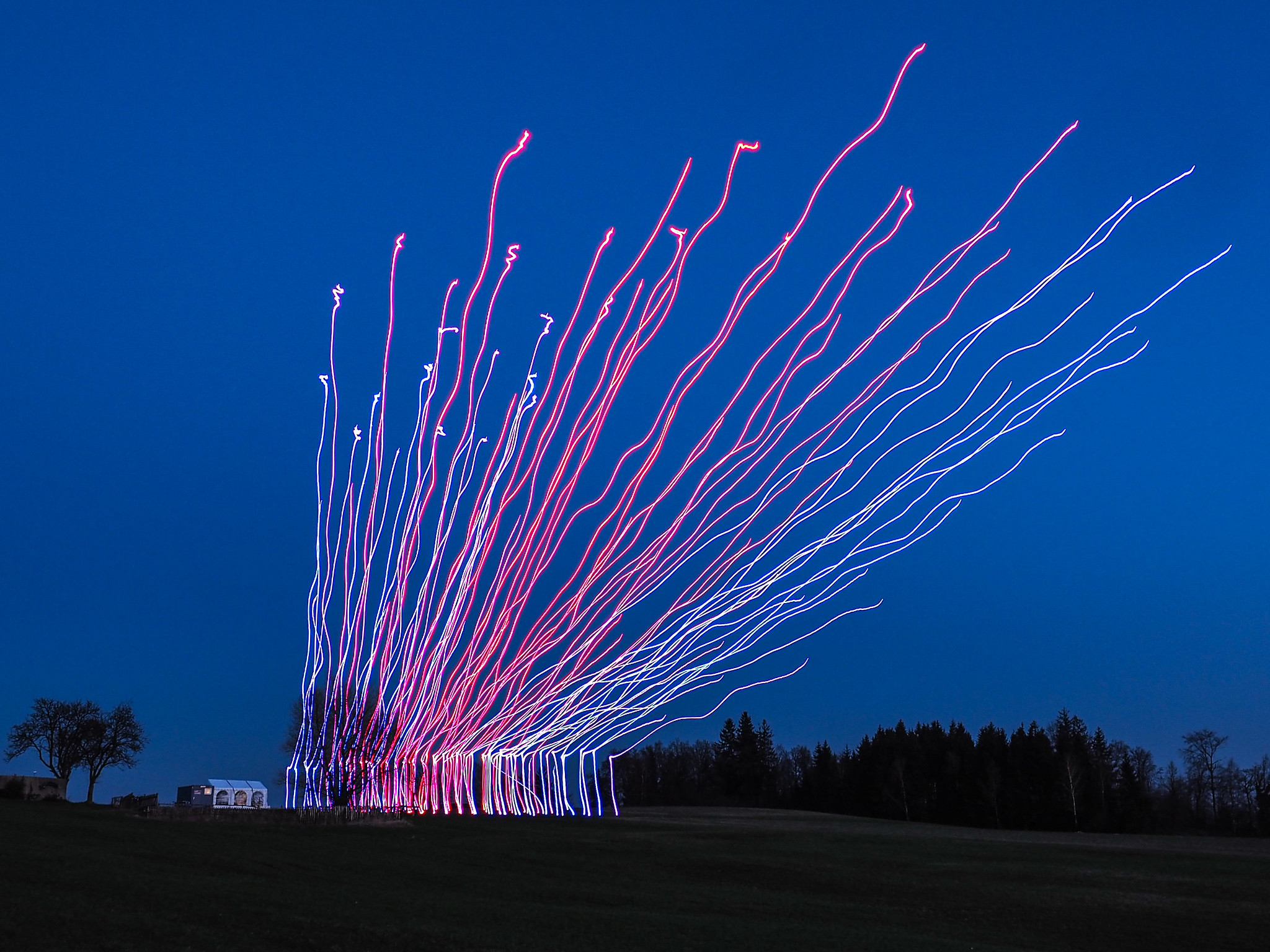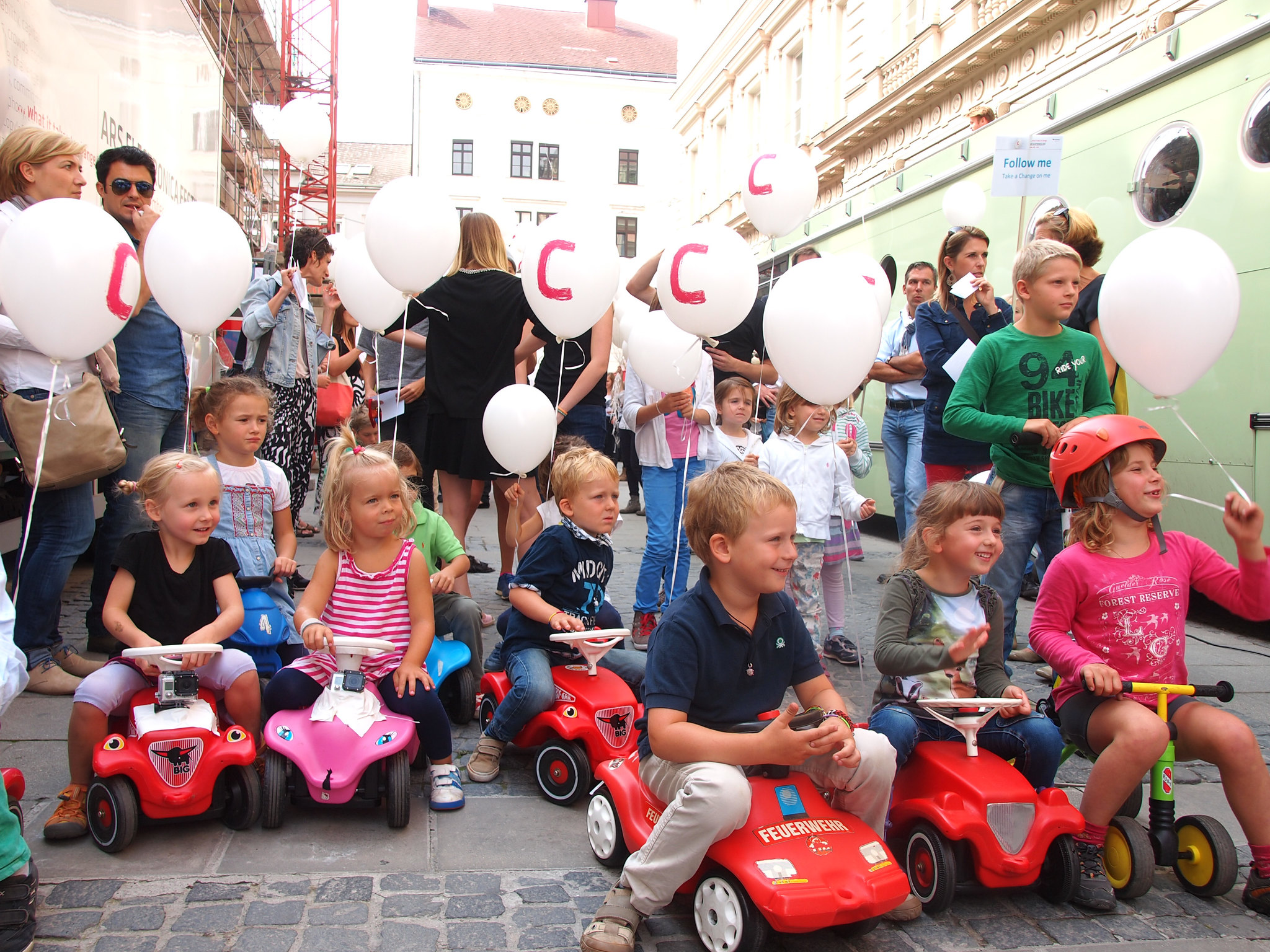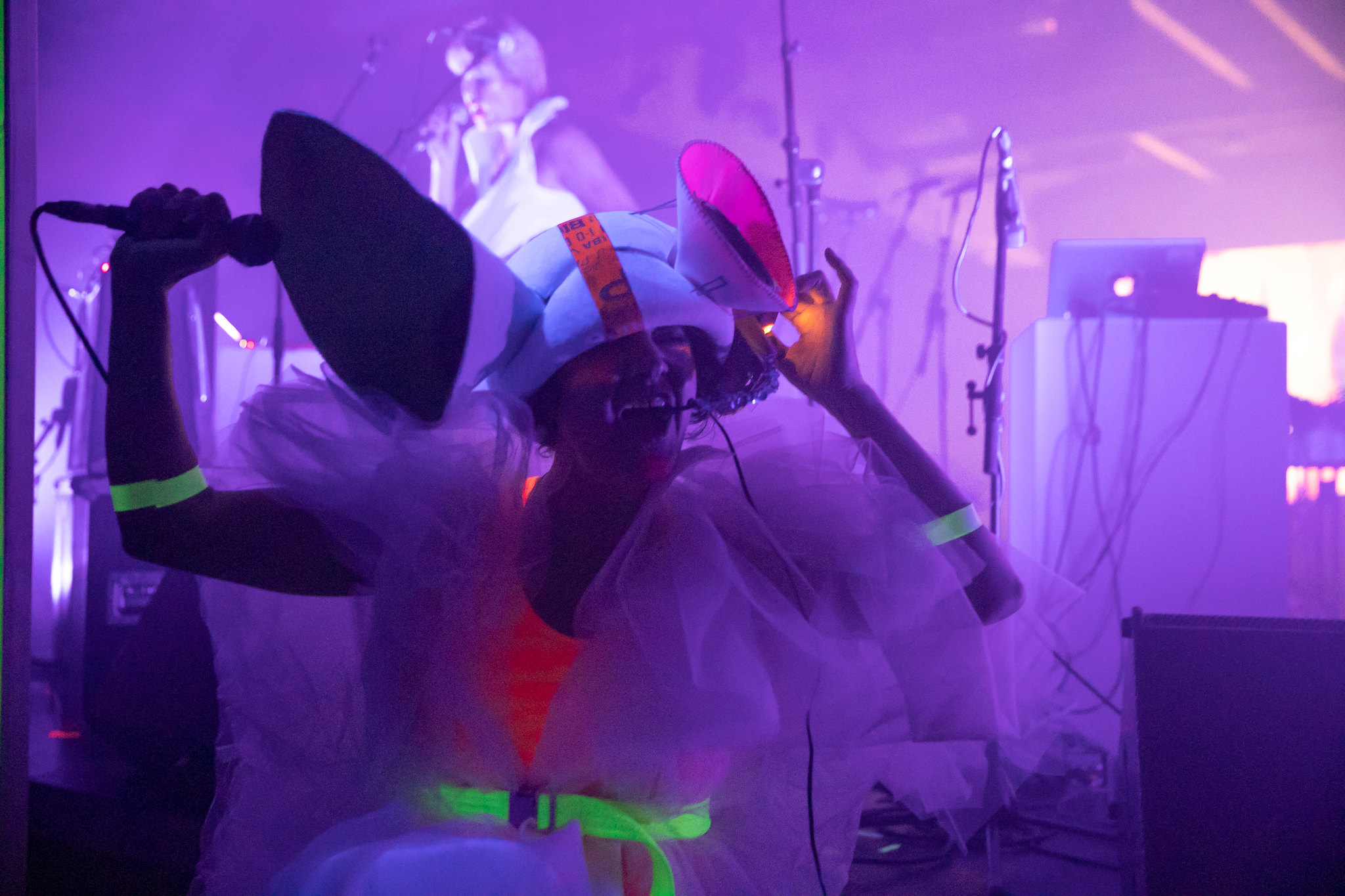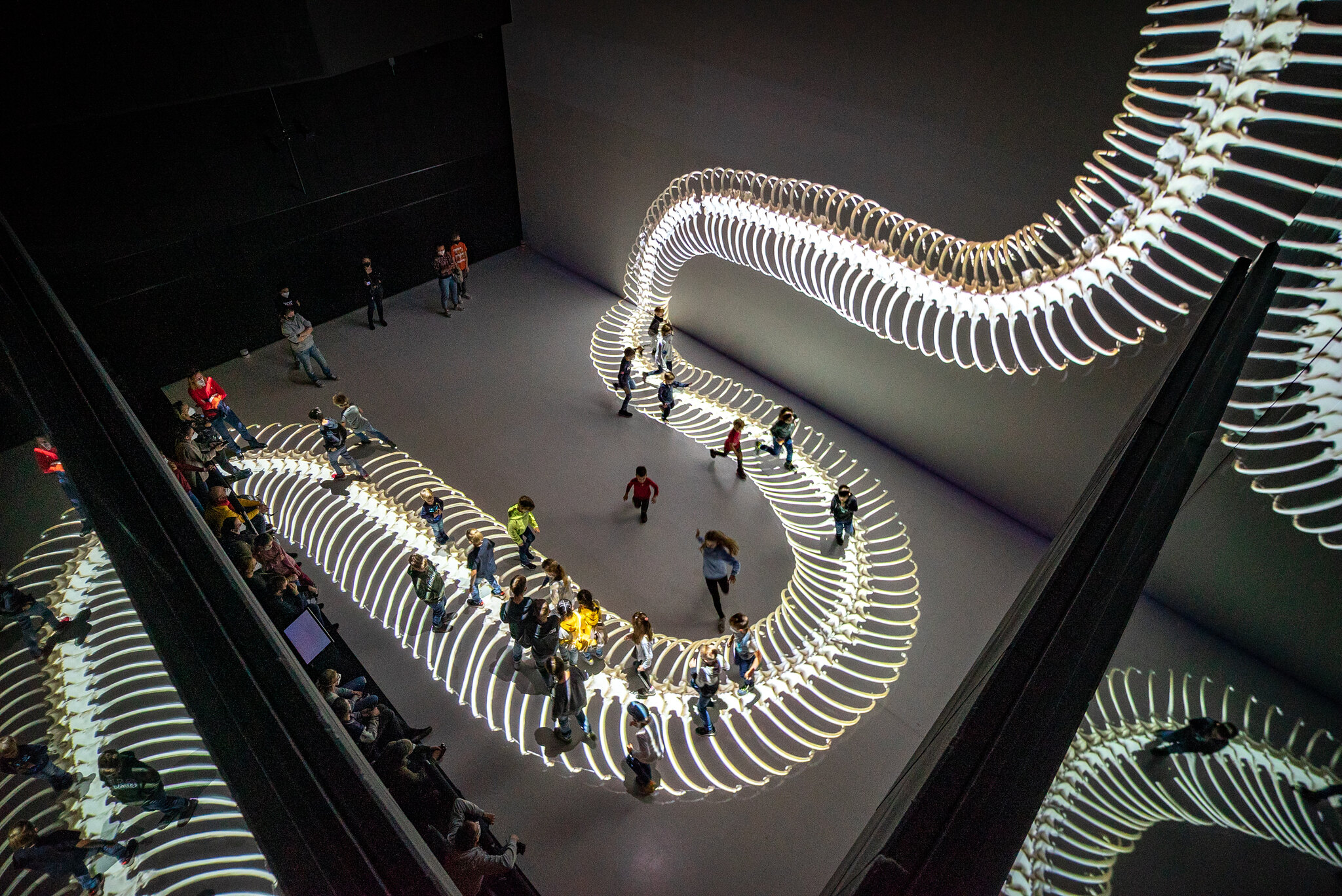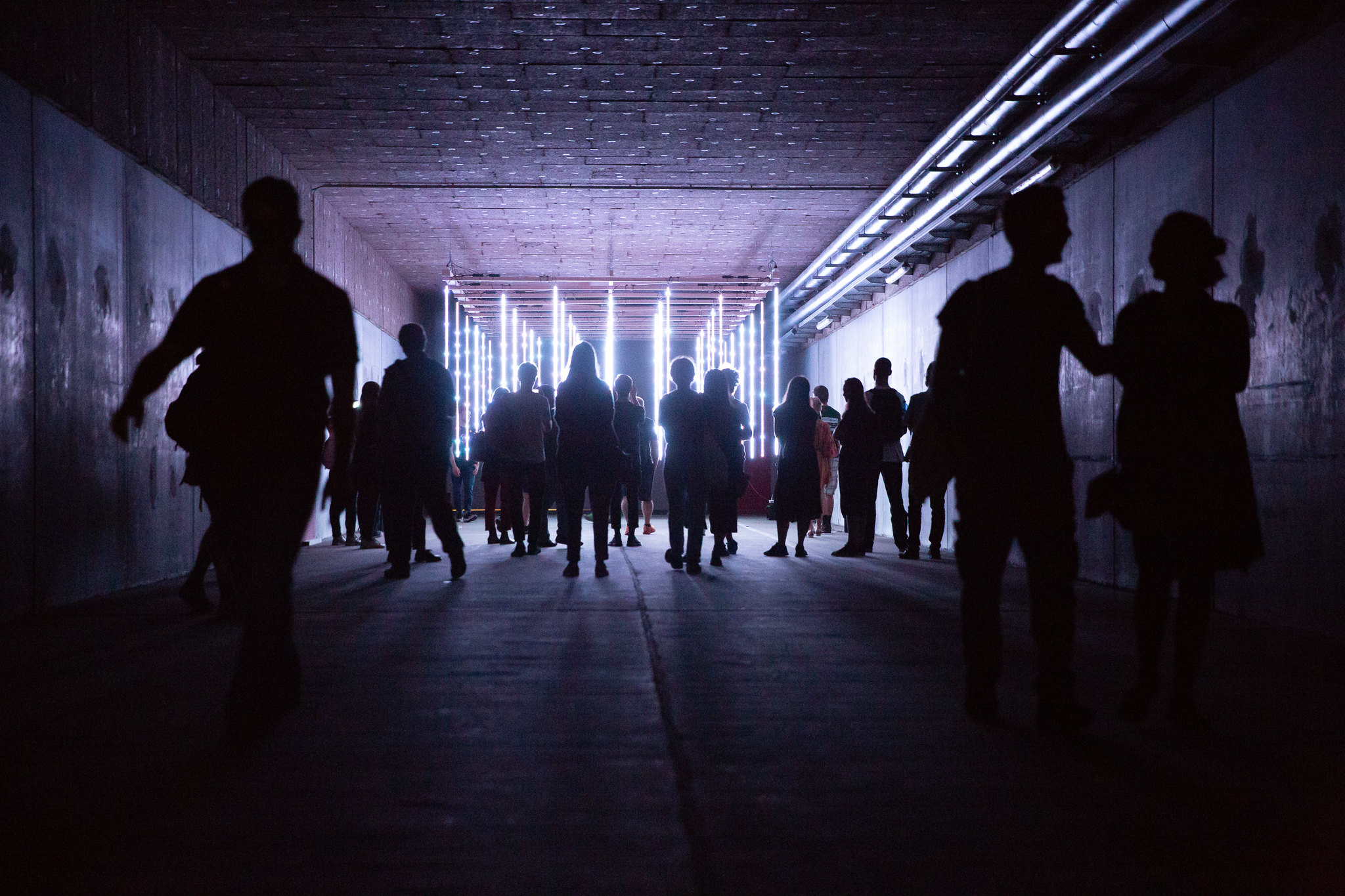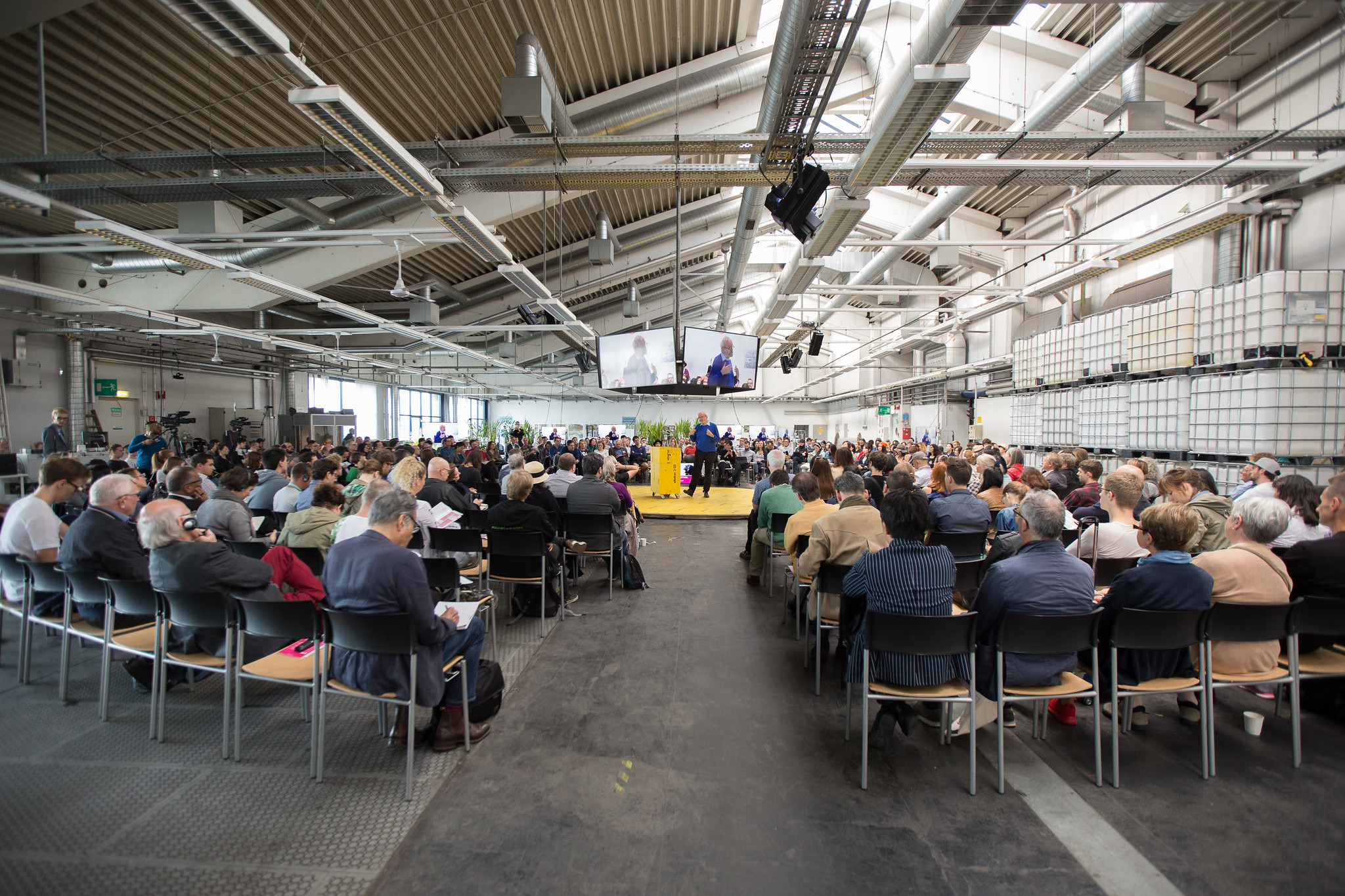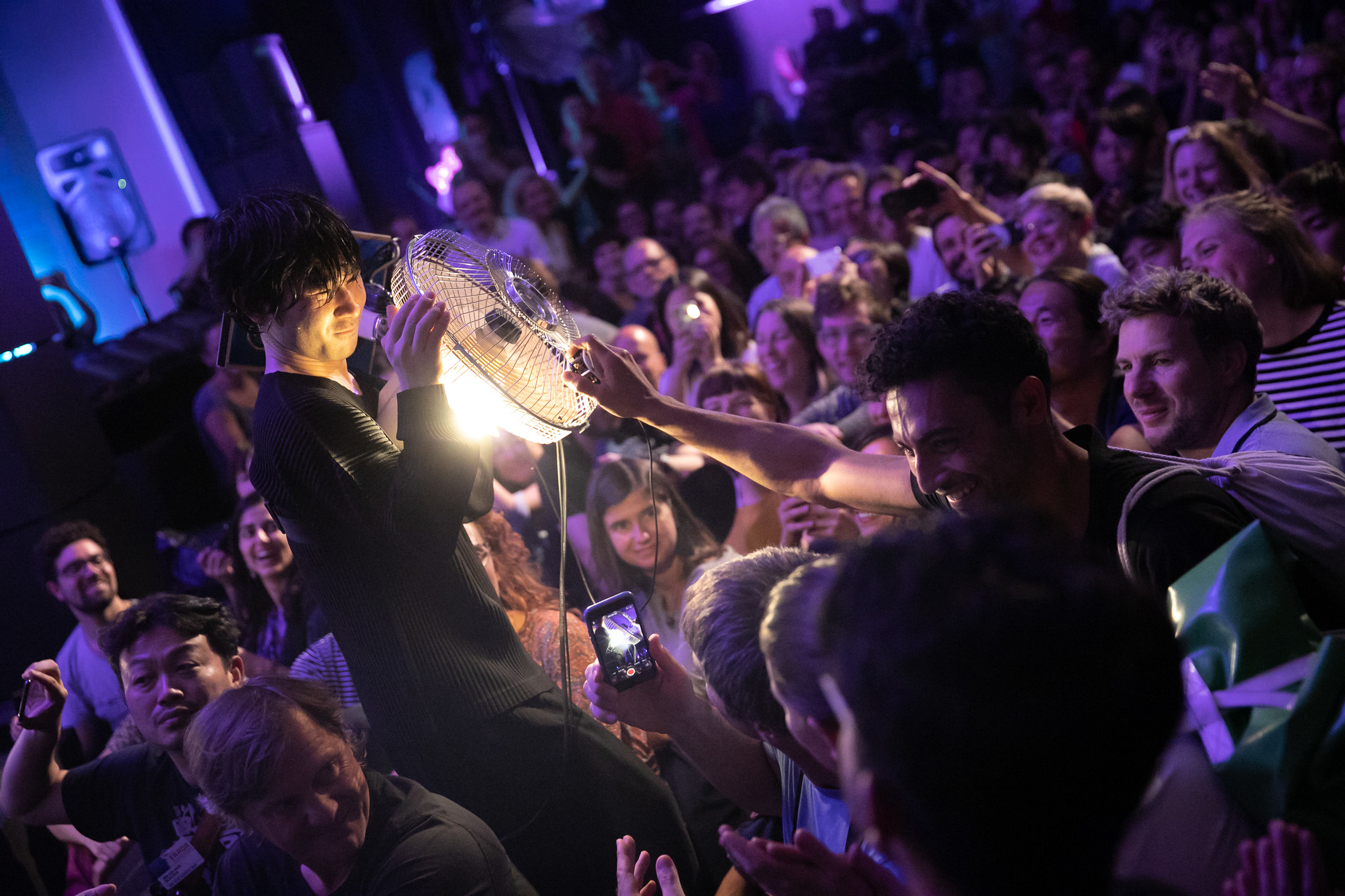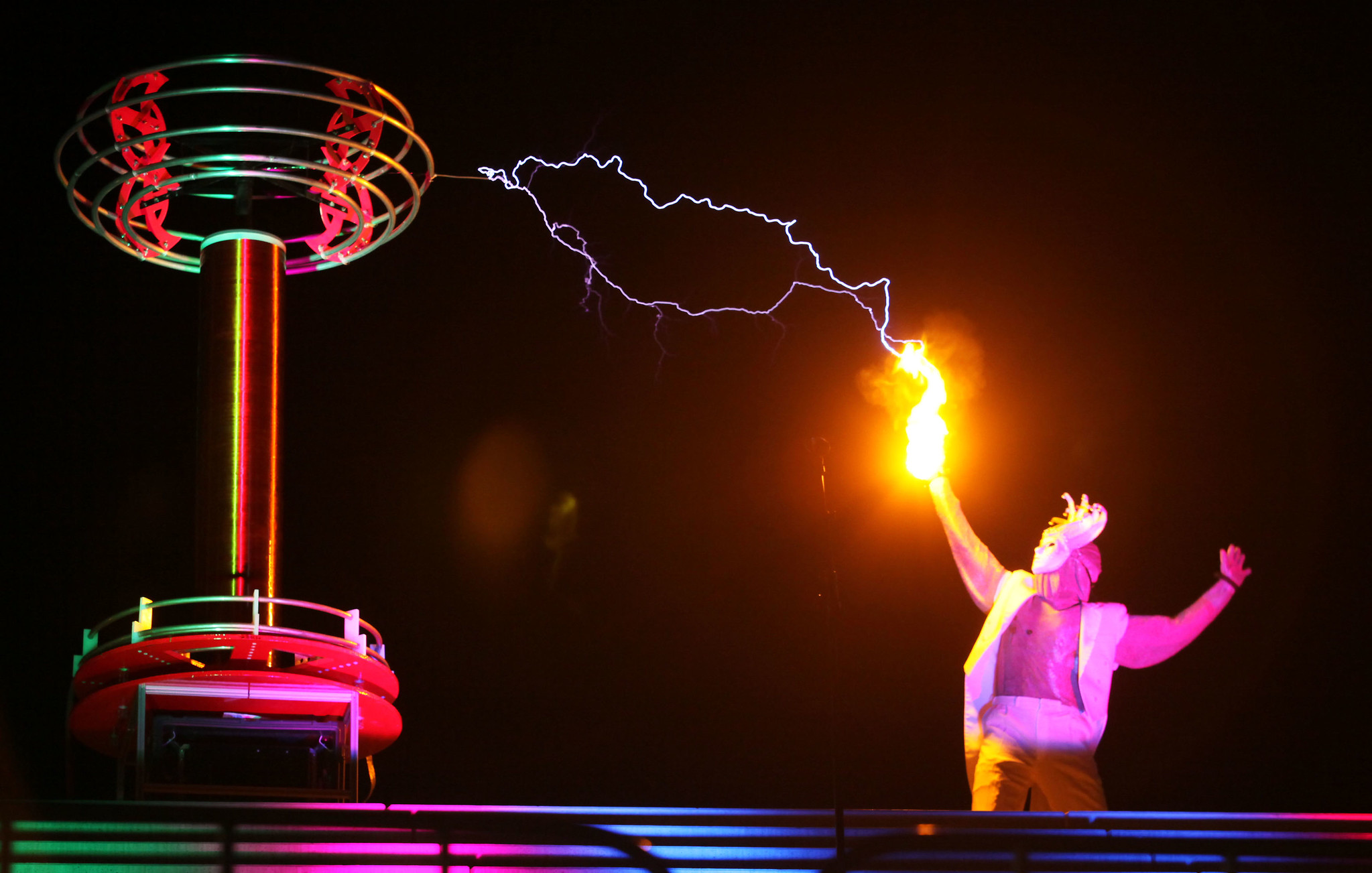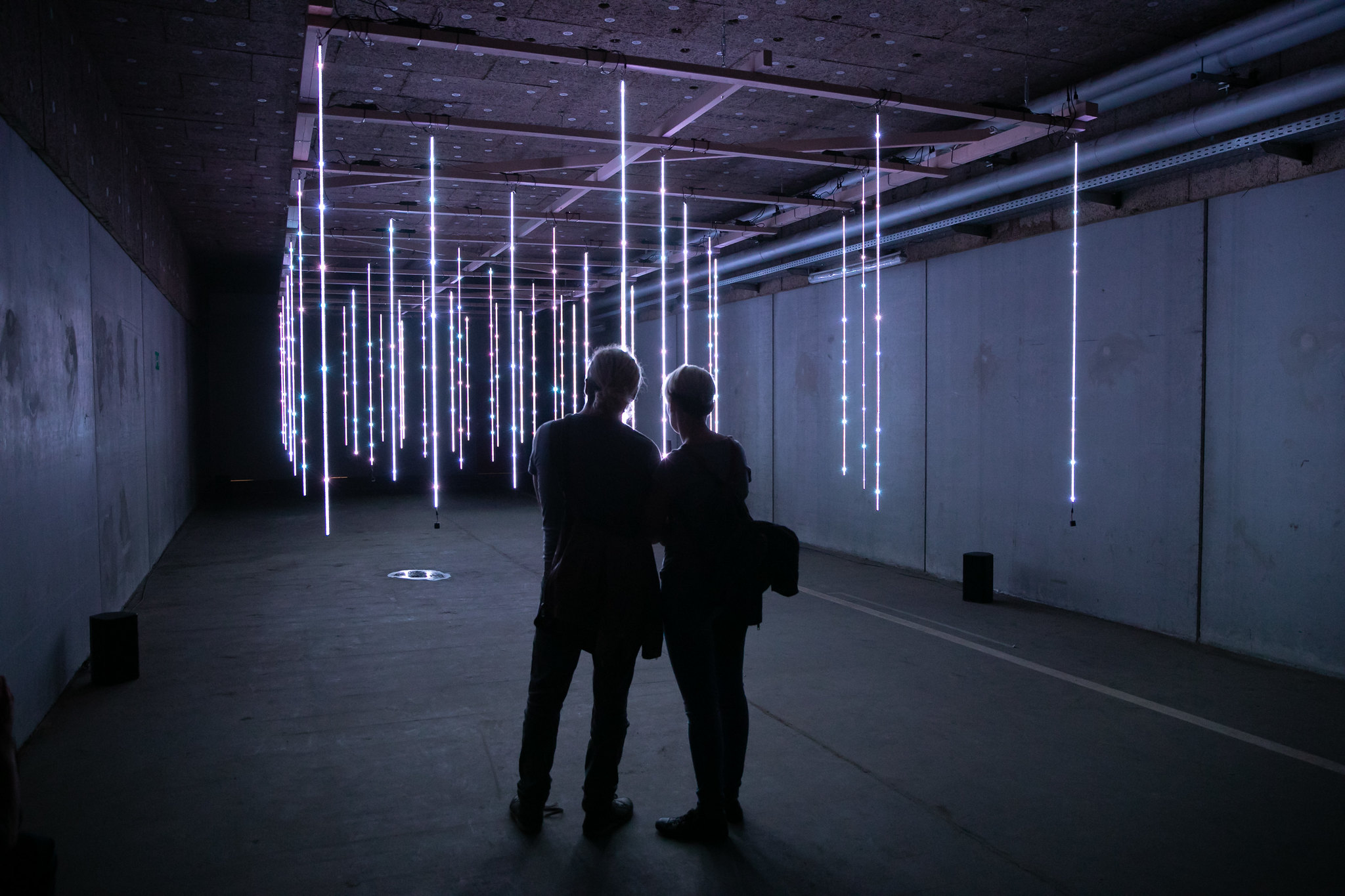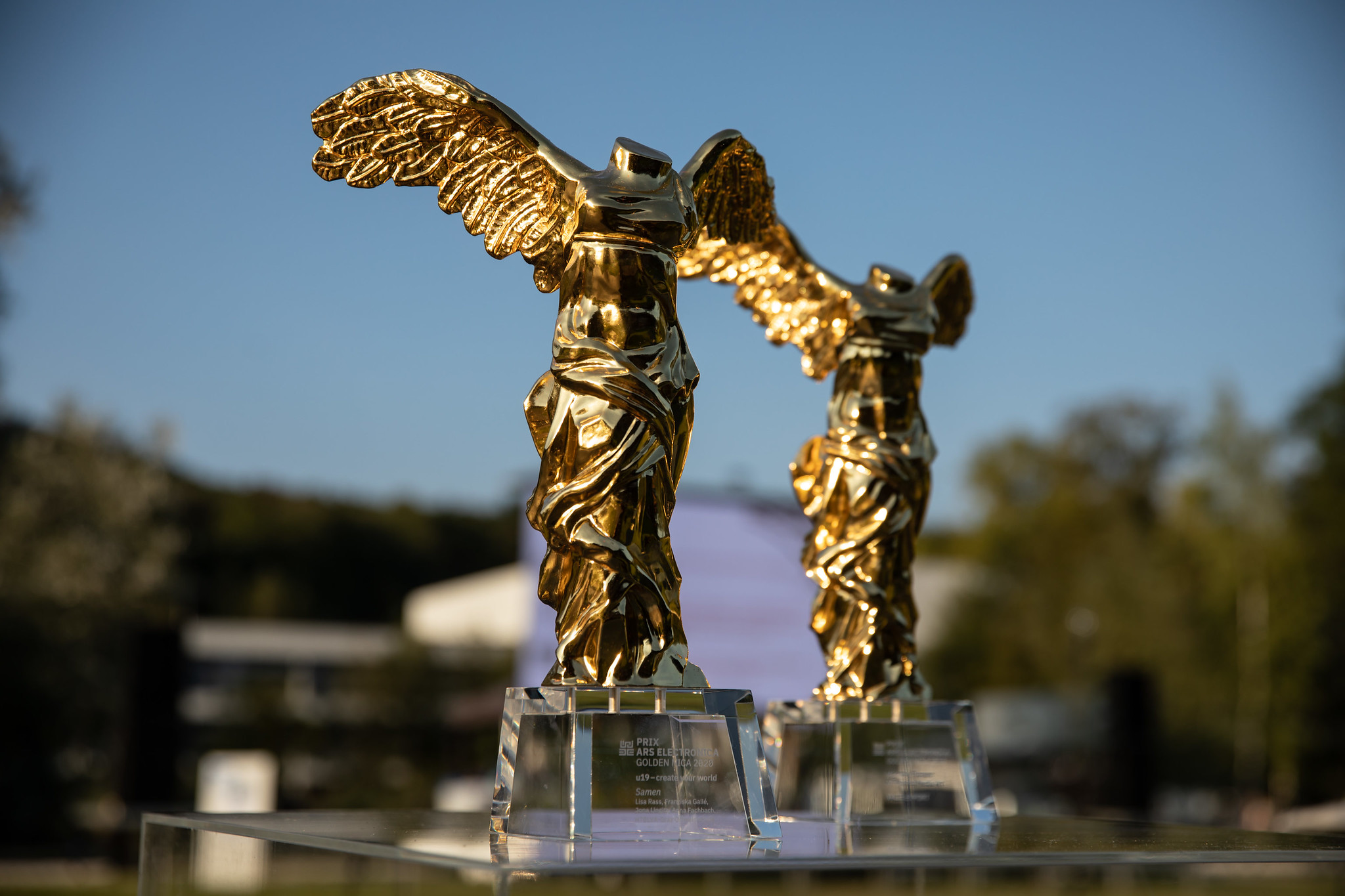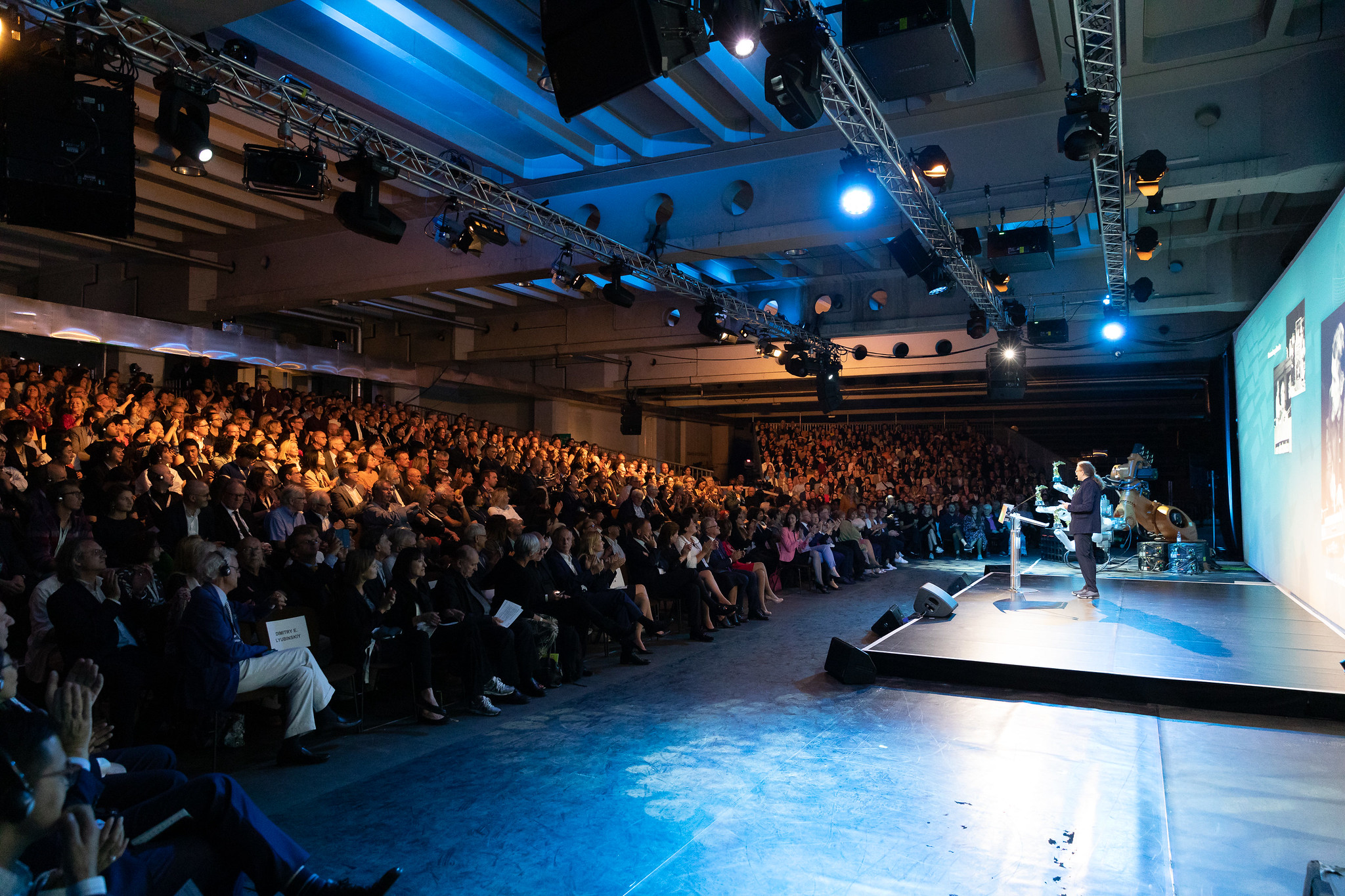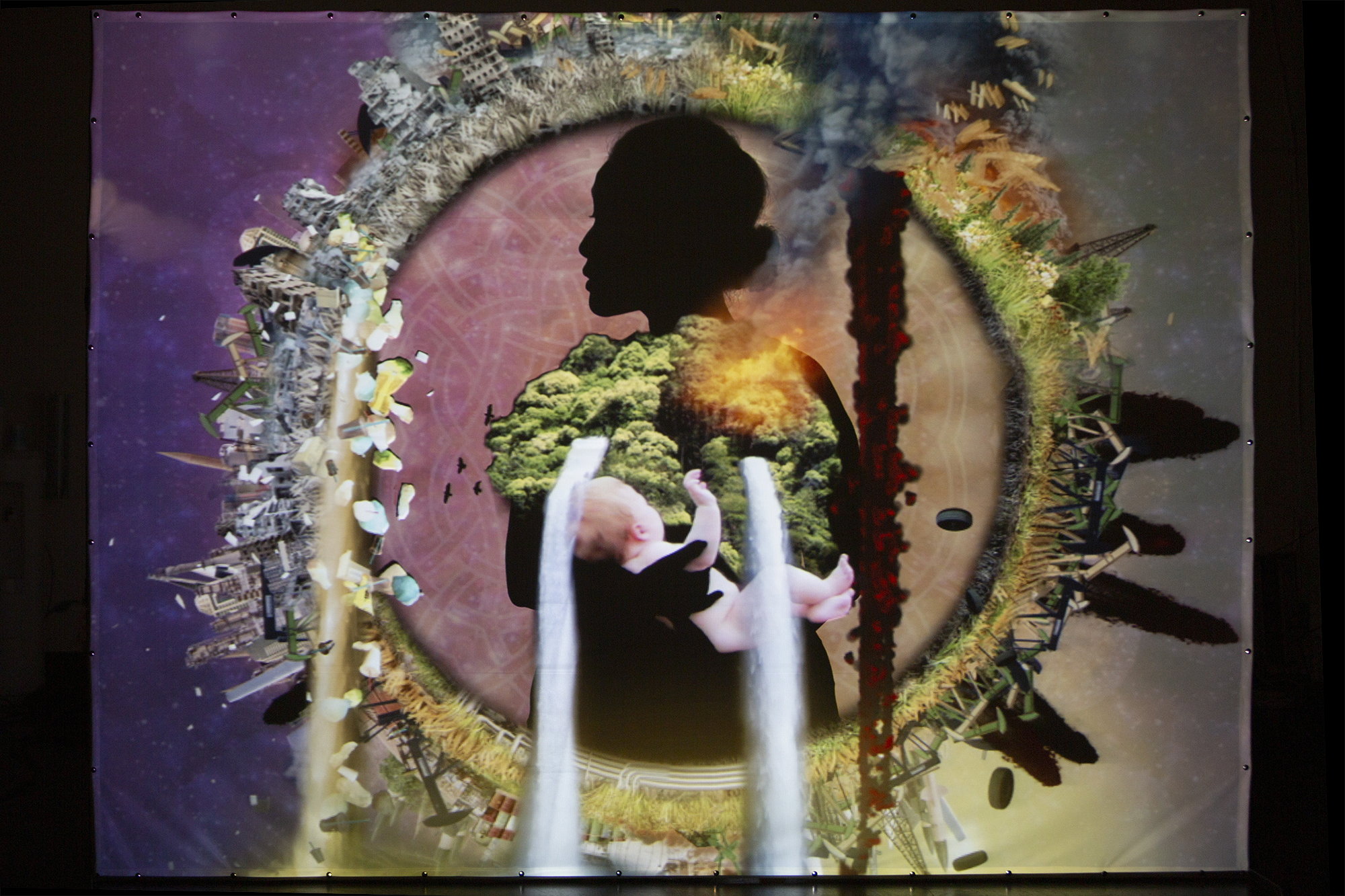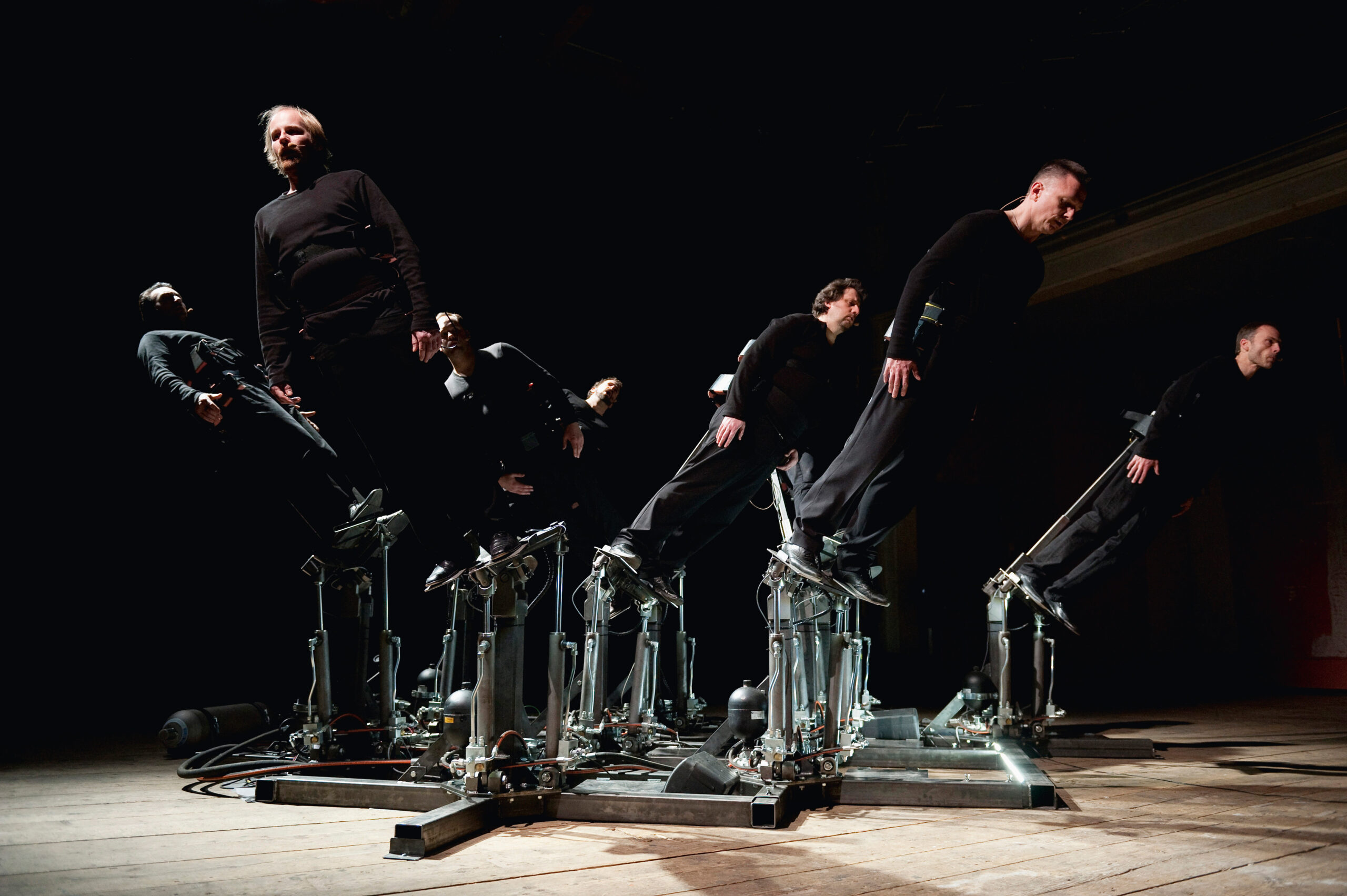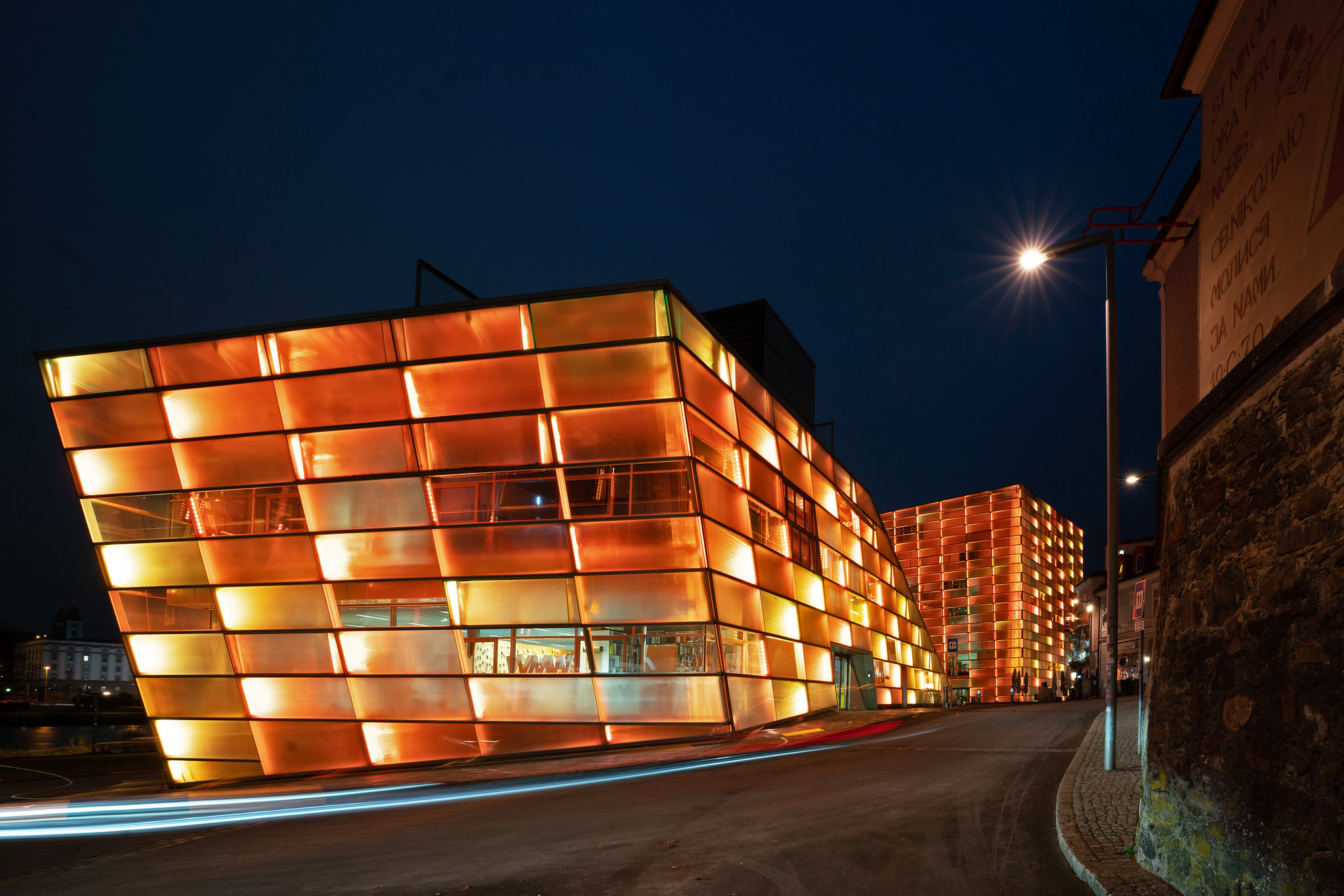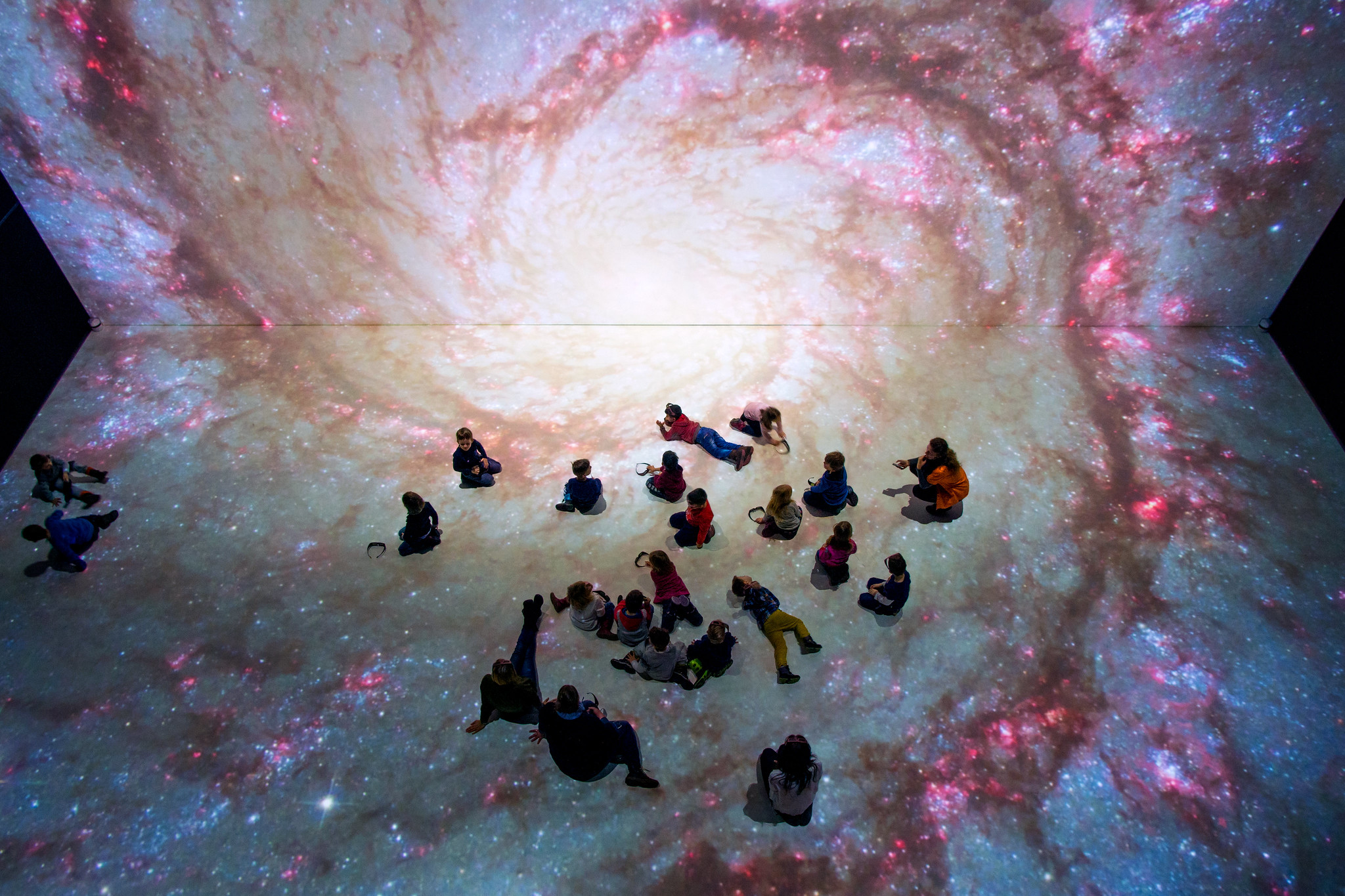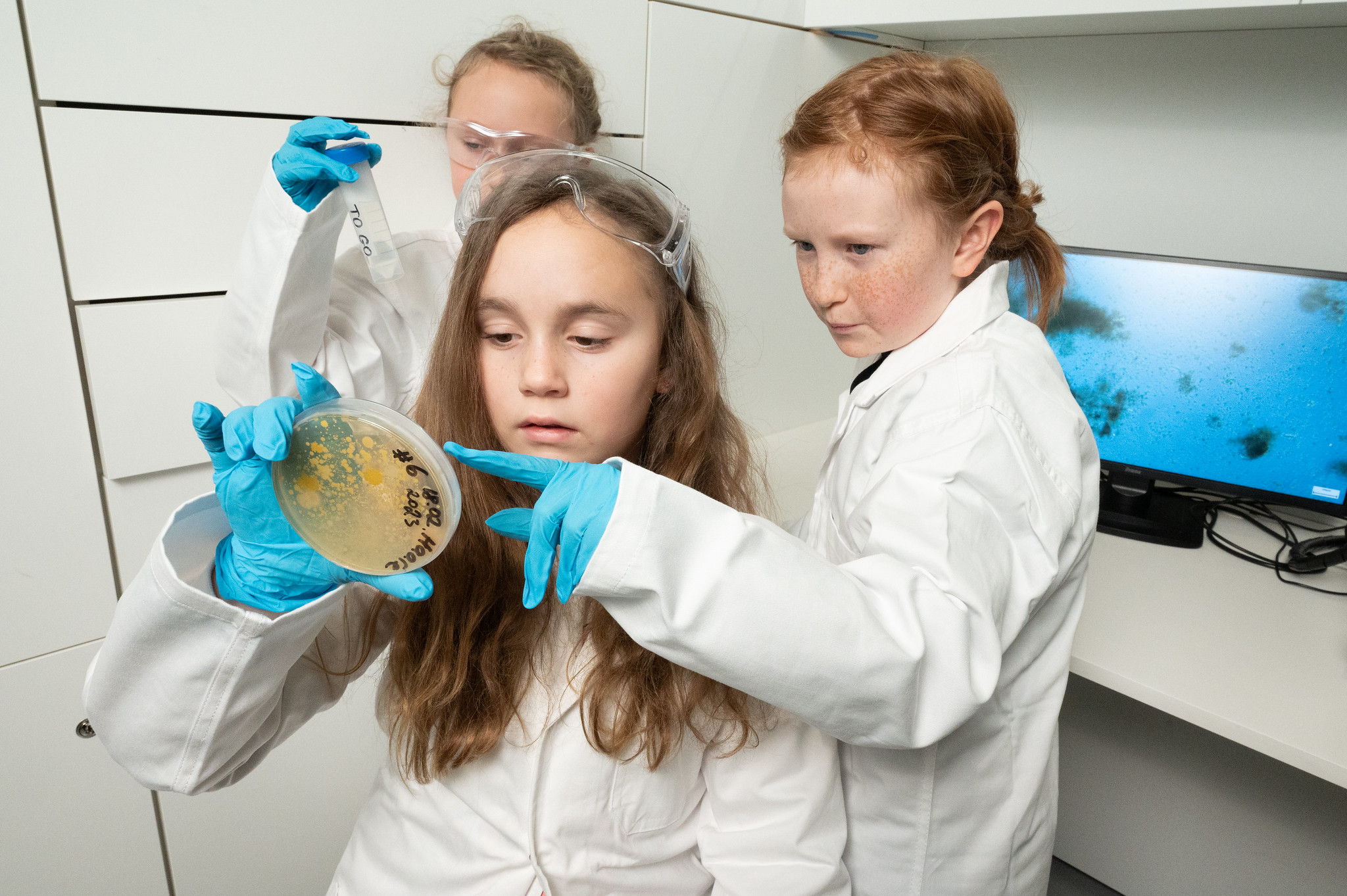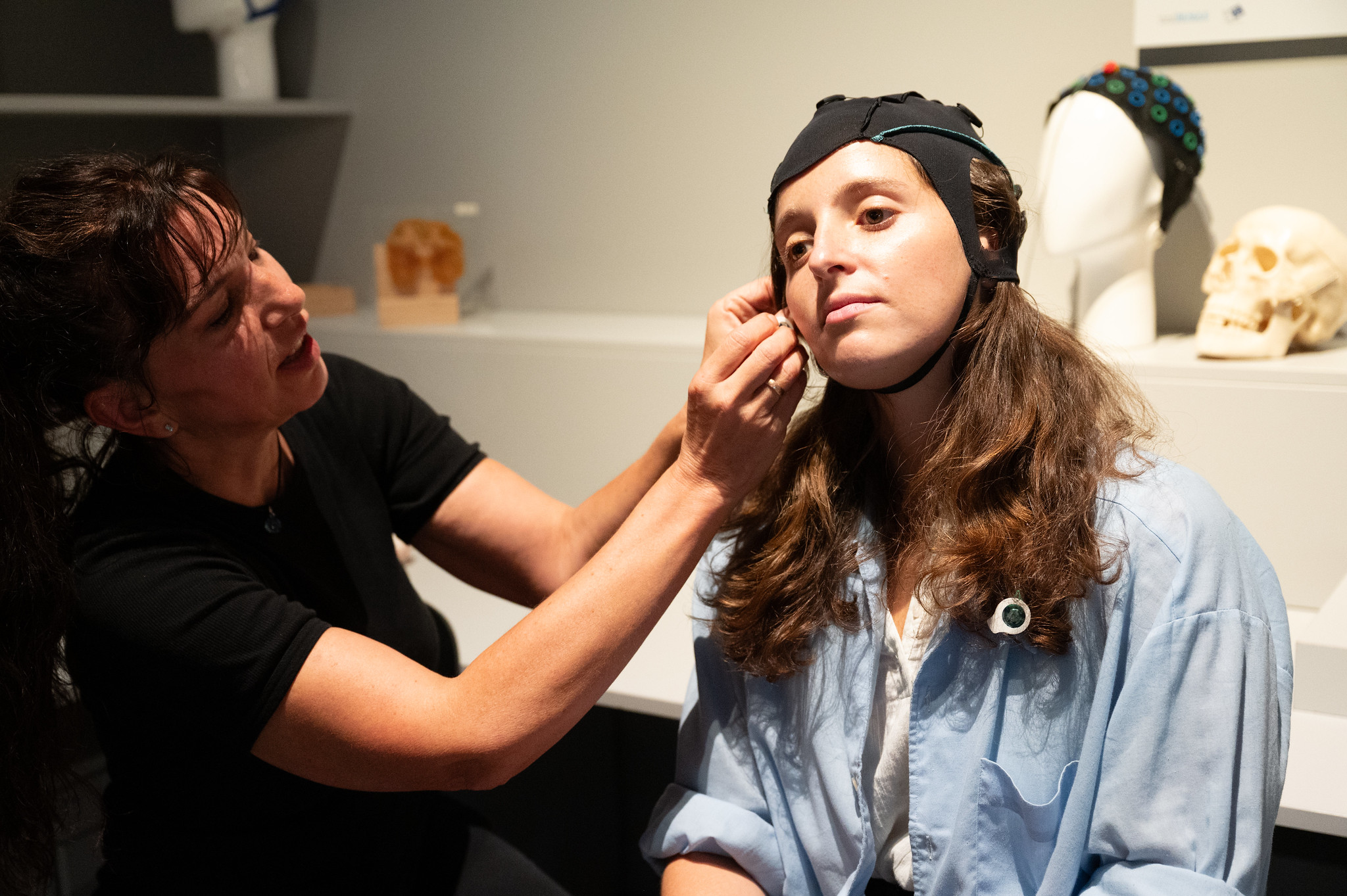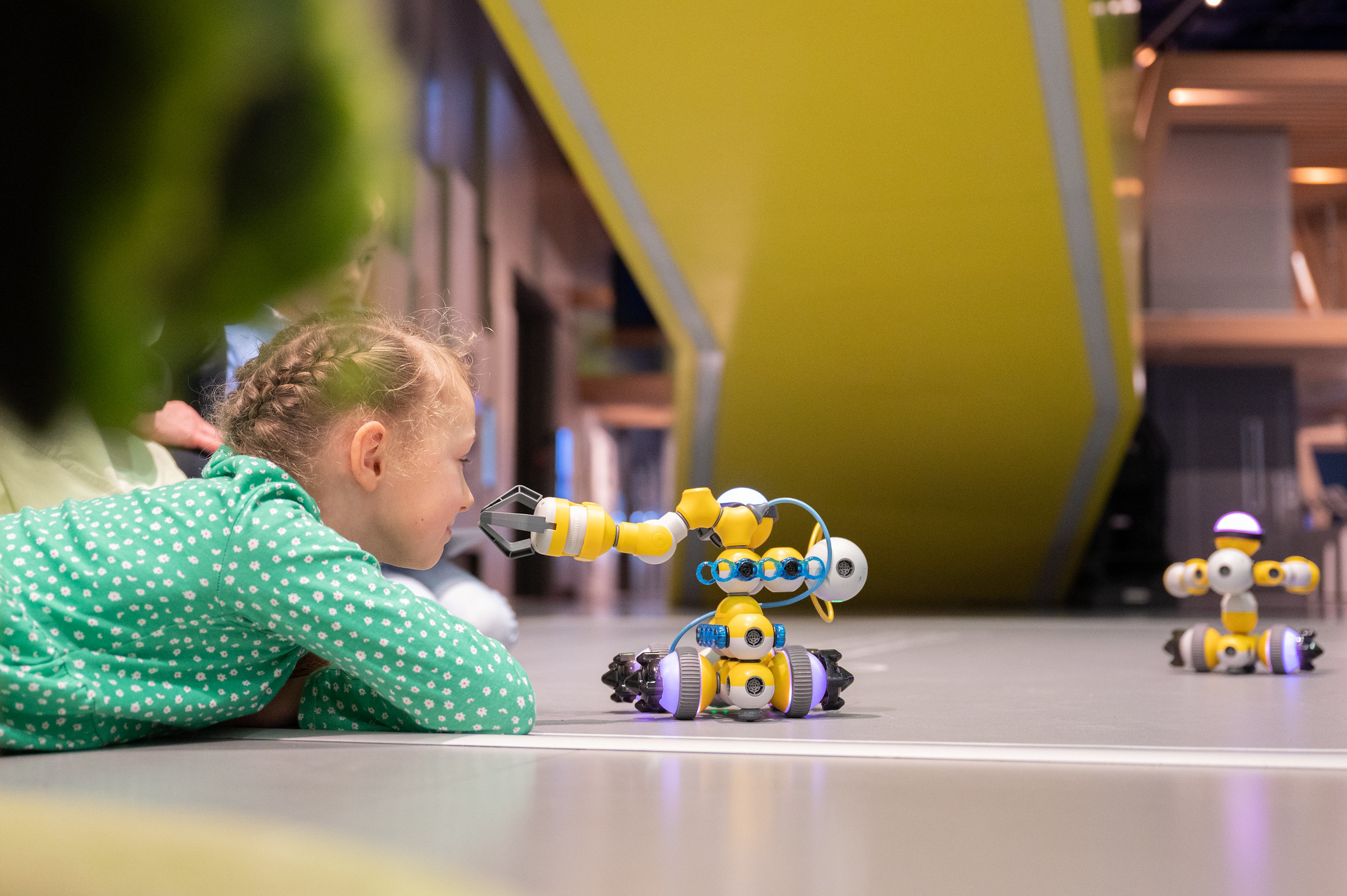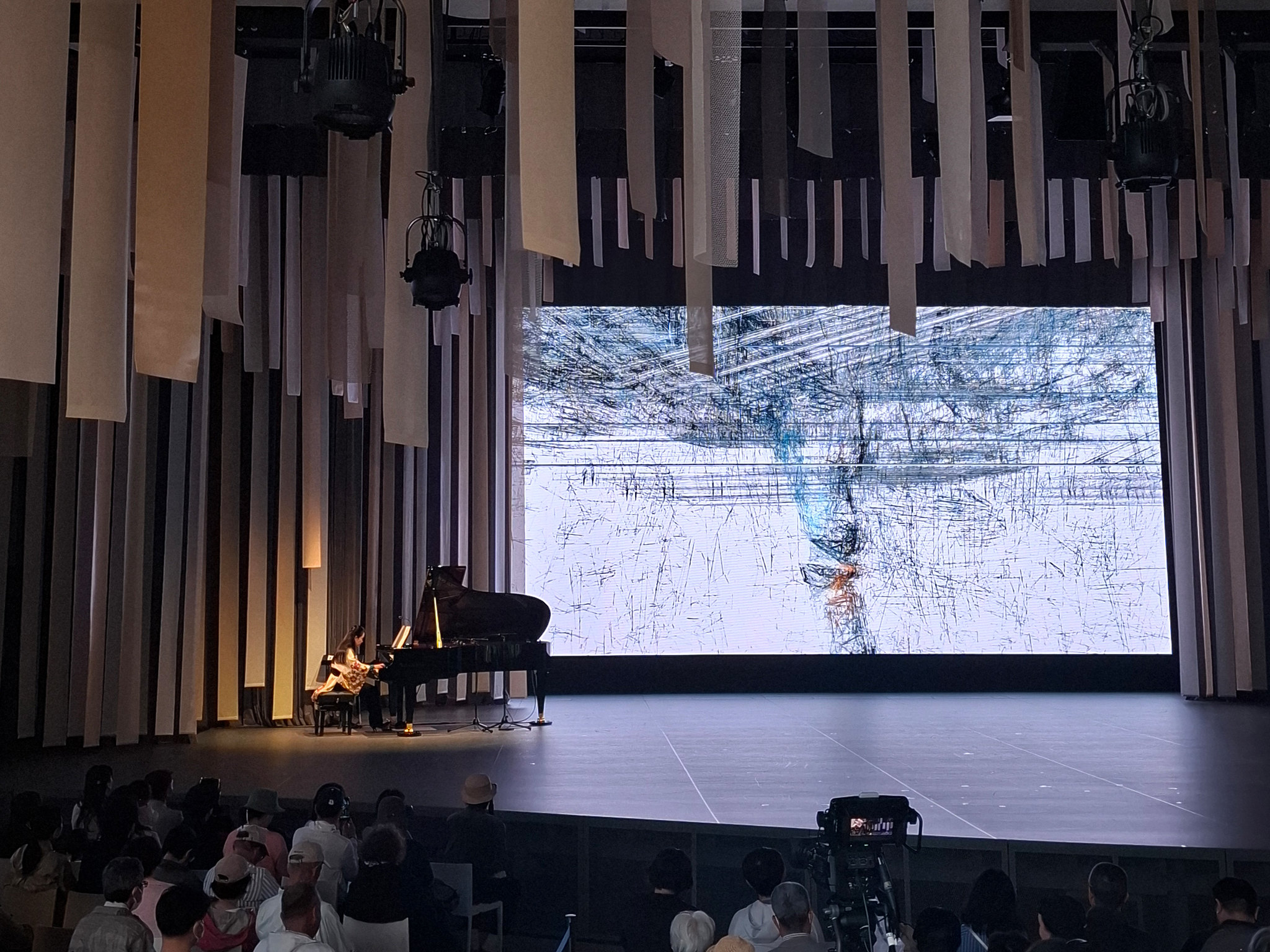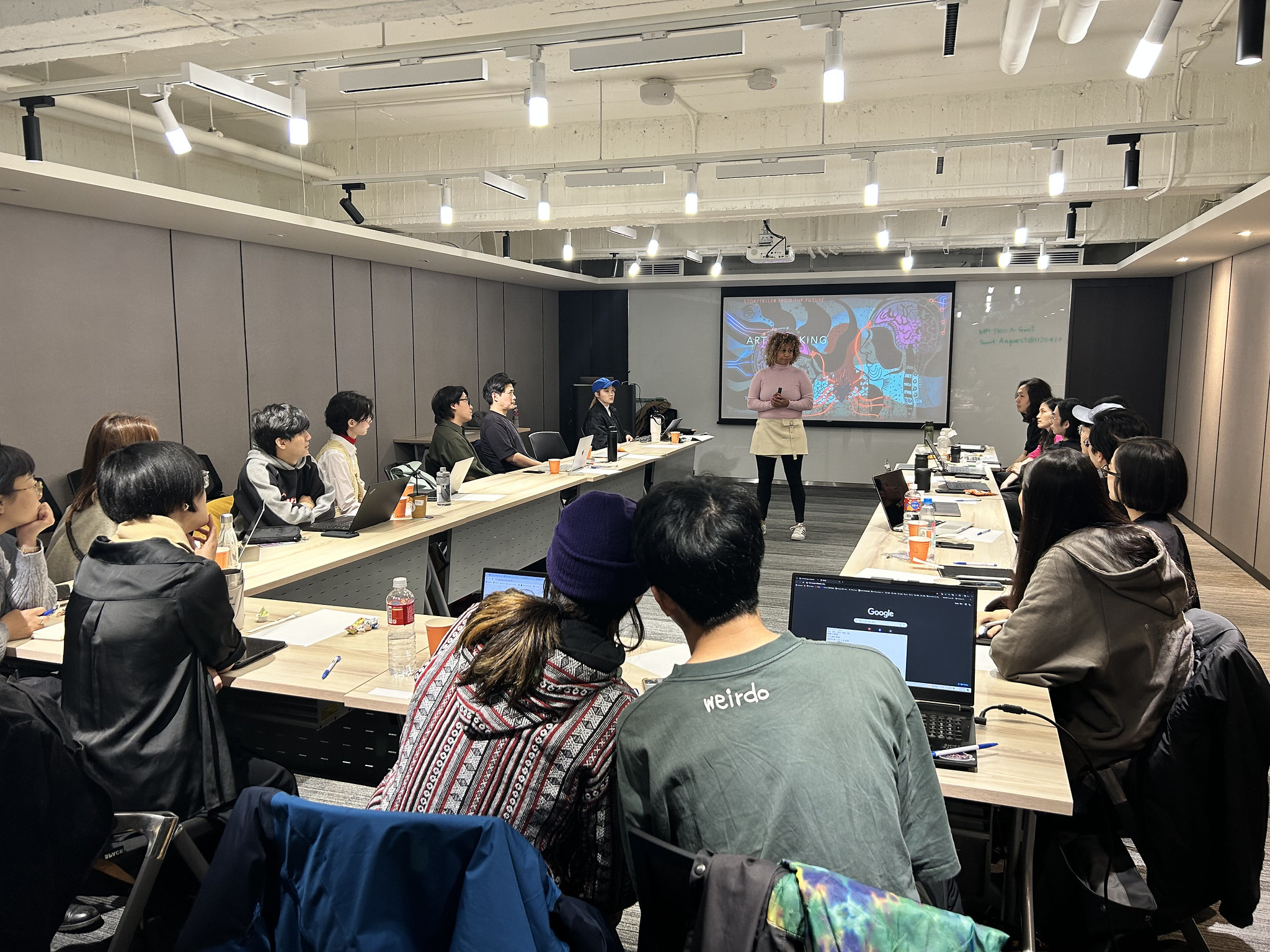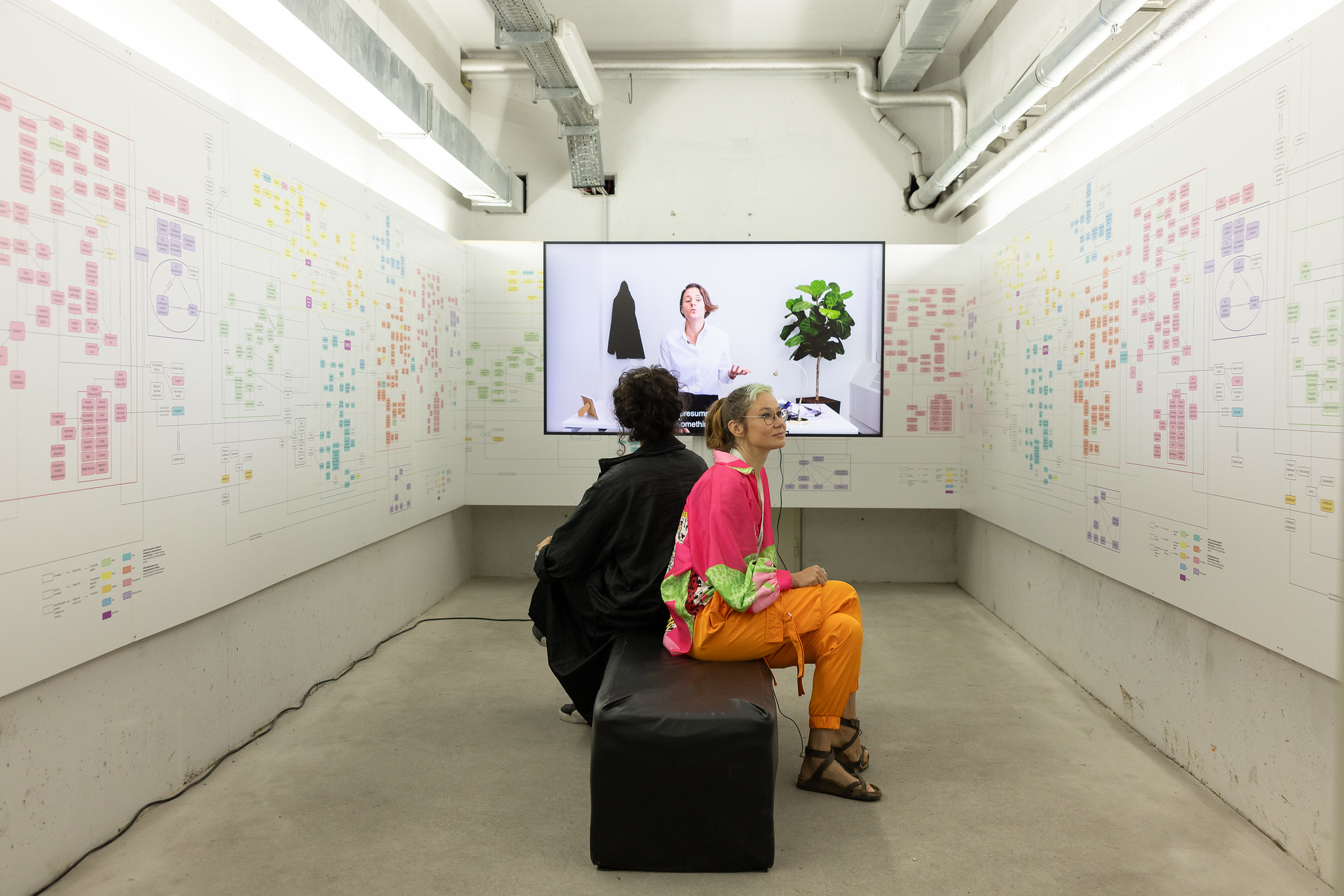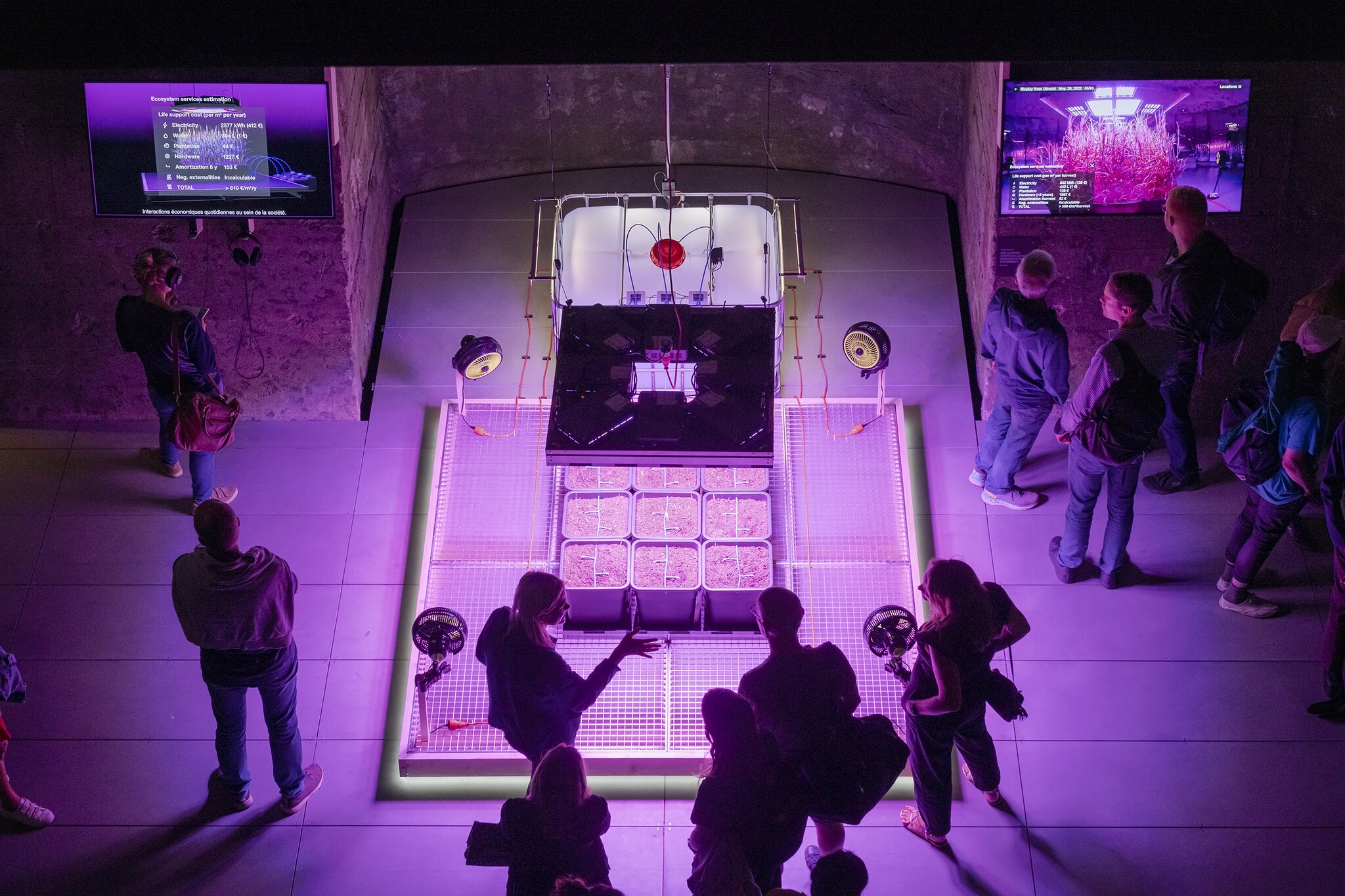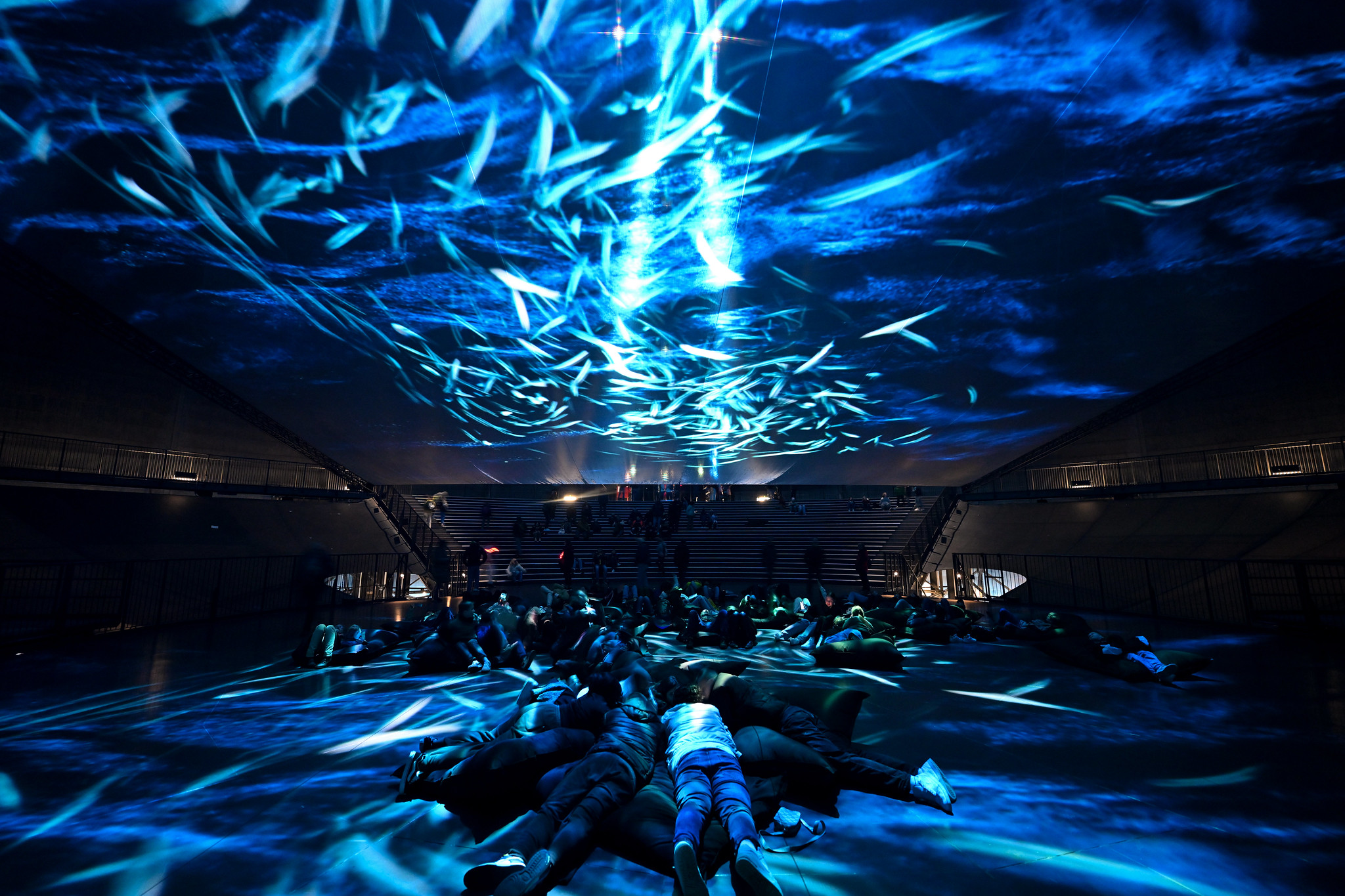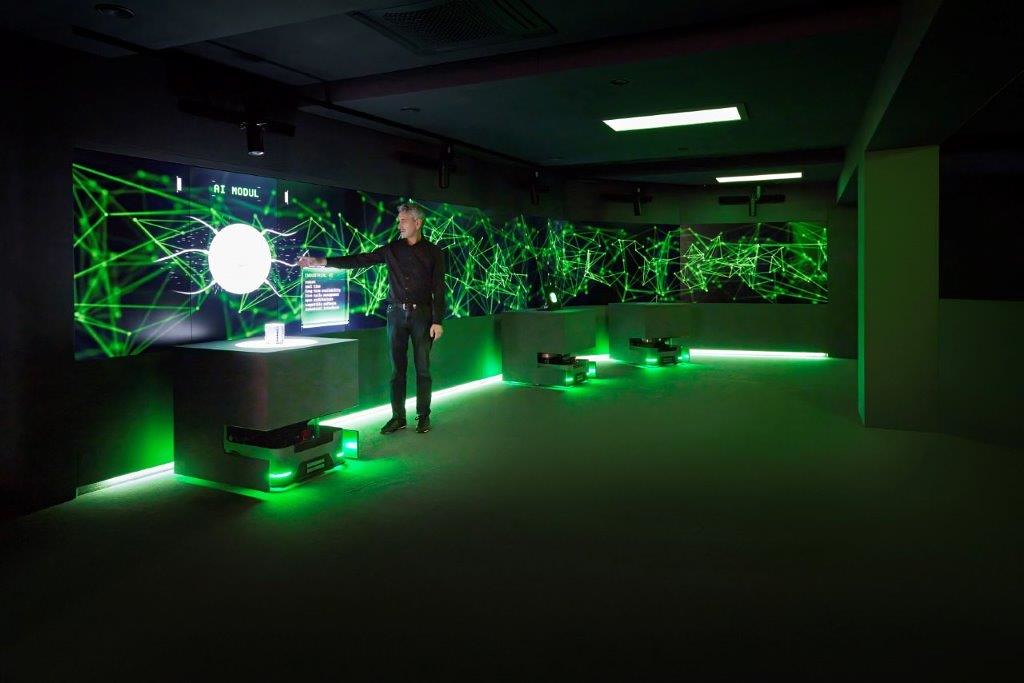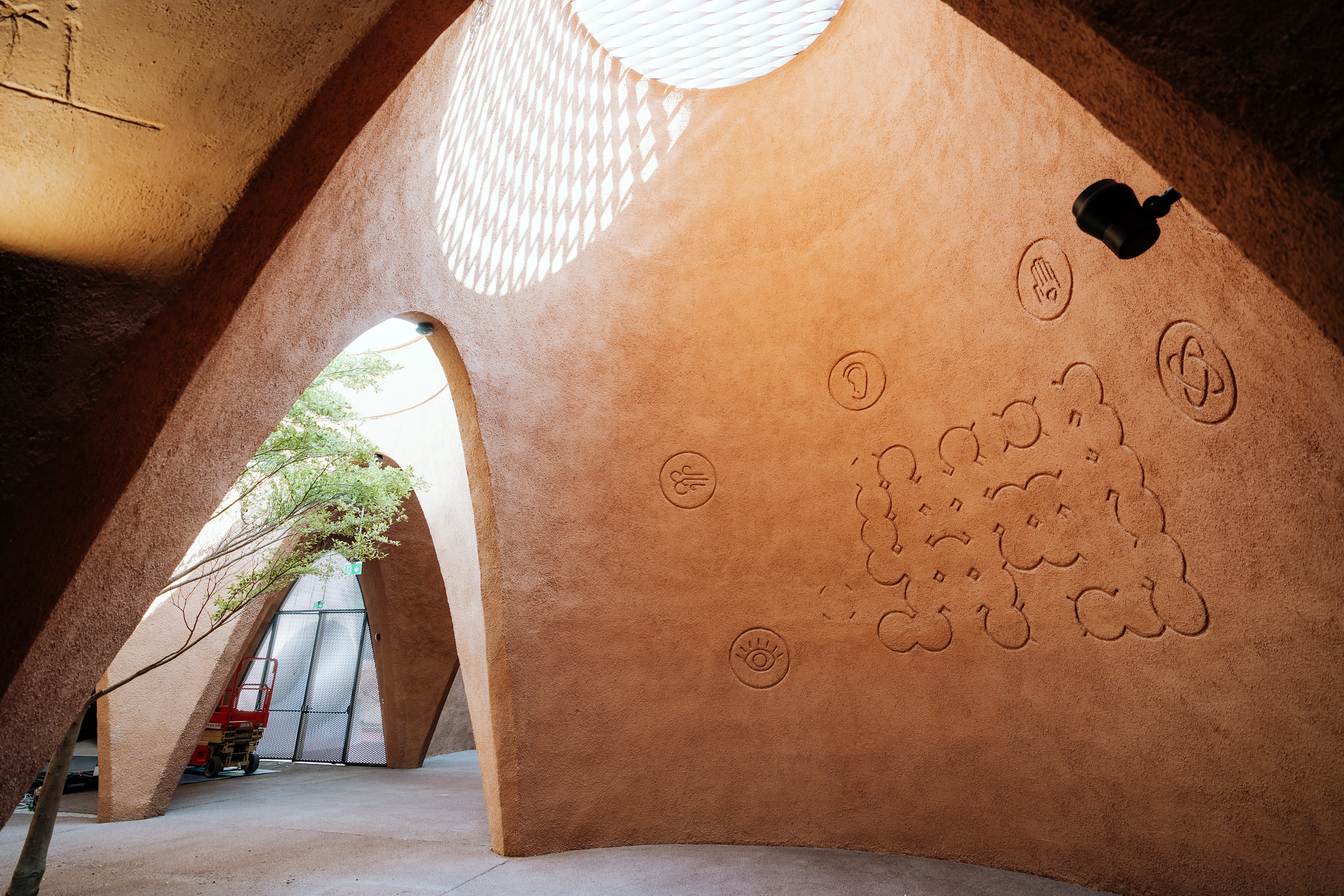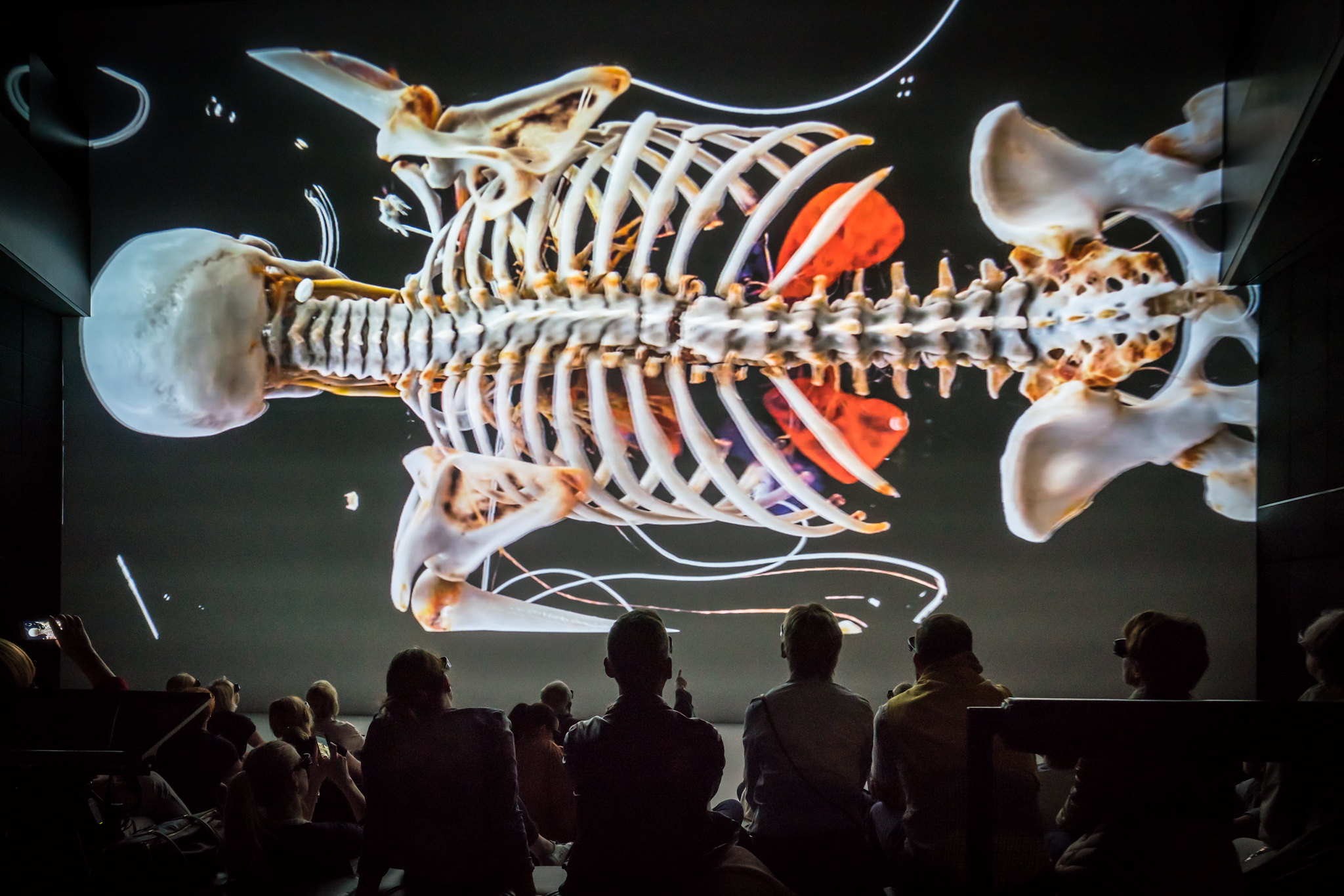Launched in 1979 as a daring experiment, Ars Electronica has developed over 46 years into a global ecosystem—characterized by continuous change, collaborative thinking, and the ambition to actively shape the future.
Looking back, the decision to establish a platform for media art in Linz, Austria, in 1979 seems like a crazy undertaking that was doomed to fail. The fact that Hannes Leopoldseder (1940-2021), then director of public broadcasting in Upper Austria, nevertheless succeeded in realizing this vision is nothing short of astonishing. However, even he could not have imagined at the time that this Linz-based Ars Electronica would evolve over the years into a world-renowned beacon for art, technology, and society.
Forty-six years after the very first Ars Electronica took place in Linz, a festival for pioneers of the digital avant-garde has become a unique ecosystem composed of several elements that inspire and strengthen each other, appealing to experts and a broad audience alike.
What Ars Electronica is today did not arise from a moment of genius. It is the result of a decades-long process—shaped by global developments and the constant effort to find meaningful ways and strategies to deal with the emerging future.
Ars Electronica will therefore continue to change. On the one hand, to get to the bottom of the ongoing digital transformation. On the other hand, to bring together people and communities from all over the world and from all possible fields who not only think about the future, but want to help shape it.
Chapter I / Against all odds
The history of Ars Electronica begins in the 1970s, when the heavy industry in Linz is slowly but surely slipping into crisis. In 1973, the first oil crisis marks a major turning point in Europe’s economic development. From 1975 onwards, the effects of the international steel crisis and the accompanying price collapse also reach Austria and Linz.
Making matters worse, the voestalpine is run as a political front organization and therefore struggles to respond to changing economic conditions – too often, decisions and strategies have to follow political guidelines and ideologies. By the late 1970s, the outlook is becoming increasingly bleak, and by 1985 the nationalized industry will finally have reached its end.
For the “steel city of Linz,” this means a state of emergency. Not only is there the threat of tens of thousands of jobs being lost, but also a structural upheaval: when the factory stands still, everything around it dies as well. The city urgently needs to reorient itself. By the late 1970s, Linz needs a new vision and a different future. But which one?
At the same time, far from the small Austrian city of Linz, something is taking shape that will later be called the “digital revolution.” One person who recognizes this early on in Austria is Hannes Leopoldseder, then director of the public broadcasting service in Upper Austria. He is certain that computers will not merely replace typewriters but, as a “general purpose technology,” will fundamentally change everything. The world is on the threshold of a new era, he is convinced, and Linz must secure its role in this future.
Together with other visionaries, Hannes Leopoldseder develops an ambitious idea: to bring the leading minds of this still young digital revolution to Linz, the city should become the venue of a new festival dedicated to the groundbreaking developments at the intersection of art, technology, and society. He succeeds in convincing the mayor of Linz, Franz Hillinger, of his plan and in securing the city as a co-organizer. To ensure that this Ars Electronica also gains broad public acceptance – and thus long-term funding – he also proposes creating a major event for the wider public: the Linz Klangwolke.
In 1979, the time has come. Linz hosts the first Ars Electronica and stages the first Klangwolke. Both are a success.
Ars Electronica Festival – Platform for Art, Technology, and Society
Today, the Ars Electronica Festival is a globally unique platform at the intersection of art, technology, and society. Every September, the five-day festival brings together international artists and representatives from universities, museums, galleries, companies, and NGOs in Linz to discuss key questions about the future—each year focusing on a different theme.
The aim is to promote dialogue between different communities and bridge the gap between experts and the general public.
As one of the leading institutions in the field of media art, Ars Electronica not only aims to inspire a broad audience, but also to create opportunities and possibilities for artists. The festival offers exhibitions, stage formats, and spaces for discourse where creative minds from different disciplines can present their projects and reflect on them together. At the same time, spaces are created where people with similar interests can meet, network, and find new partners.
The Ars Electronica Festival never sees itself as the end point of creative processes, but always as a starting point for something new.
Chapter II / The world’s leading address for avant-garde
How can a festival for art, technology, and society be maintained and developed when the entire (media art) scene on which it is based operates so far away from Linz? And “far away” really does mean far away in the pre-internet era.
Once again, it is Hannes Leopoldseder who, together with Christine Schöpf, head of the ORF culture department in Upper Austria, comes up with the brilliant idea. What if Ars Electronica launched a competition inviting artists from all over the world to submit their work? A high-caliber international jury would select the most interesting projects, and Ars Electronica would reward their creators with prize money, a trophy, and an appearance at the festival. Artists would have a strong incentive to participate in the competition, and Ars Electronica would remain at the pulse of the digital revolution and in close exchange with its leading minds thanks to the constant influx of new ideas and projects. Linz would put itself on the map of international media art.
The plan worked. In 1987, the first Prix Ars Electronica is announced and immediately receives 715 submissions from 15 countries. Among the very first Golden Nicas are those awarded to Peter Gabriel and John Lasseter.
Prix Ars Electronica – Media Art Competition
Launched in 1987, Prix Ars Electronica has long been the most prestigious and traditional award for media art worldwide. Awarded annually, the competition comprises several categories that highlight and reflect current developments in art, technology, and socio-political discourse.
The winners are selected by an international jury of experts, awarded the coveted Golden Nica, prize money, and presented at the Ars Electronica Festival.
The Prix Ars Electronica not only honors established artists, but also sees itself as a springboard for young talents and pioneers—the competition opens up space for new perspectives and experimental practices at the intersection of art, technology, science, and civil society.
Since its inception, the Prix Ars Electronica has been a global trend barometer and a driving force in the creative ecosystem of Ars Electronica.
Chapter III / Roots in the region
The Tandem Festival and Prix bring Ars Electronica international success. However, because the city of Linz provides the majority of the funding, Ars Electronica is also intended to be an offering for the local audience. At the beginning of the 1990s, things start to move forward.
A new museum is to be built right next to the Nibelungen Bridge on the northern bank of the Danube. The question is: What should this museum be about?
For Hannes Leopoldseder, the answer is clear. After Tim Berners-Lee invented the World Wide Web in 1989, and pioneers like Marc Andreessen made the net accessible to millions of people with the Mosaic browser in 1993, it seems obvious to him that Linz needs an Ars Electronica Center – a place to familiarize people with the digital technologies that will now become part of their everyday lives.
Such a museum would not be a showroom for media art, but would have to appeal to the people on site – families, school classes, in short, anyone who wants to get an idea of what the digital revolution will mean for them and their lives. It would be a space for trying things out, for grasping and understanding.
Once again, Hannes Leopoldseder manages to inspire the mayor of Linz with his idea. And not only that. In Gerfried Stocker, he also finds a young media artist whose life path has already been shaped by Ars Electronica and who is eager to help establish the new venue and advance the next development steps of the platform for art, technology, and society.
In 1996, the Ars Electronica Center opens.
Ars Electronica Center – A place for experimentation, play, and learning
In 2025, the Ars Electronica Center will be a unique museum and living laboratory where visitors of all ages can discover and try out new technologies for themselves – from artificial intelligence (AI) and virtual reality (VR) to brain-computer interfaces (BCI).
Interactive installations and open laboratories provide direct, practical access to complex topics, making them understandable and tangible. A special highlight is Deep Space 8K, where immersive virtual worlds are impressively staged. Another unique feature is the team of information trainers who accompany and support visitors on their journey of discovery.
As an extracurricular learning center, the Ars Electronica Center works closely with schools, universities, and companies from the region and around the world. The insights gained from these partnerships are continuously incorporated into customized educational programs for schoolchildren, students, researchers, children, and families.
The Ars Electronica Center was opened in 1996 and extensively expanded and redesigned in 2009.
Chapter IV / Research, development, design
n the run-up to the museum’s opening, however, one important question still arises: who could develop and build all those interactive installations with which the Ars Electronica Center aims to invite people to discover and experiment? There is no one anywhere around offering anything like that. It quickly becomes clear: an Ars Electronica Center will only work in combination with an Ars Electronica Futurelab – a prototype hybrid of artistic studio and scientific laboratory, capable of creating exactly the kinds of exhibitions and experiences that will be needed.
The decision is made, and an international team of artists, scientists, and developers begins designing interactive scenarios and experiential spaces. The Ars Electronica Futurelab lays the foundation for the Ars Electronica Center to become a true crowd-puller.
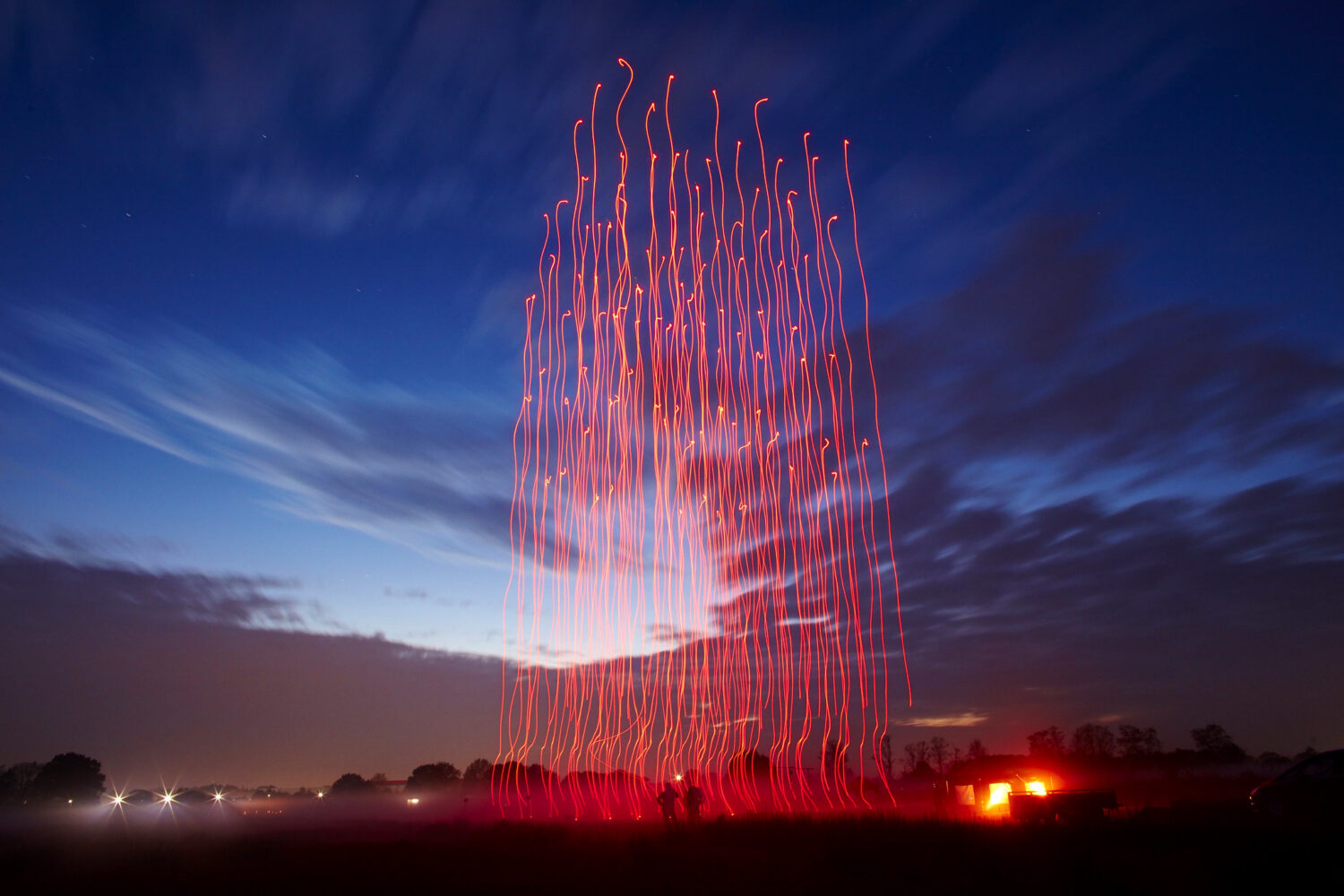
Ars Electronica Futurelab – Shaping the future through prototyping and dialogue
As an artistic studio and research laboratory, the Ars Electronica Futurelab develops future prototypes and works that make complex topics comprehensible, open up new perspectives, and stimulate critical dialogue. The focus is on how the interplay of art thinking, art-science research, and technologies—such as artificial intelligence, virtual and augmented reality, or data visualization—can contribute to social progress.
The Ars Electronica Futurelab collaborates with partners from business, culture, research, and education around the world. The aim is to promote new ways of thinking, trigger innovation beyond pure profit logic, develop future-oriented education and communication formats, and create space for artistic experimentation—in short, to achieve impact.
This work is based on critical thinking, artistic practice, and innovation.
Chapter V / u19
Thanks to the Ars Electronica Center and Ars Electronica Futurelab, it is easy to get local audiences interested in the interplay between art, technology, and society. The interactive stations are particularly popular with children and school groups—first from Linz, then from the surrounding region, and finally from all over Austria.
The enthusiasm with which young visitors discover the Ars Electronica Center and the inspiration they take away from their visits provide the impetus for the next step: the younger generation should find their place in the Ars Electronica cosmos throughout the year and actively contribute to the debate about the future.
In 1998, the Prix Ars Electronica receives its own category for aspiring media artists: “u19” invites children and young people under 19 years of age and residing in Austria to submit their ideas, concepts, and prototypes for the future – with their imagination deliberately given no limits.
Over the years, “u19” evolves into the label “create your world” – and into a platform that is active throughout the year: as part of the Ars Electronica Festival, it stages its own large-scale event; with the create your world tour, artists are brought directly into schools; in addition, it is involved in a wide range of educational initiatives.
create your world – Platform for empowering young designers and educational initiatives
create your world aims to inspire, promote, and showcase the next generation of creative minds. The program connects young people, takes their visions for the future seriously, and gives them a voice.
It includes an annual competition as part of the renowned Prix Ars Electronica, as well as a large festival format with exhibitions, hands-on labs, workshops, and networking opportunities.
Create your world is also active beyond the festival: throughout Austria, artists visit schools as part of tour projects to promote creativity, exchange, and cultural education.
Over the years, create your world has developed into an important interface for a wide variety of educational initiatives. From elementary school to university, research projects, workshops, and festival formats take place here throughout the year.
Chapter VI / Out into the world
In the early 2000s, Ars Electronica is riding a wave of success. With the Prix and the Festival, it has established itself as a leading platform in the international media art scene, and thanks to the Ars Electronica Center, it is firmly rooted in the region.
As digitalization reaches and accelerates more and more areas of life, the Linz prototype at the intersection of art, technology, and society is attracting increasing attention. In 2004, Ars Electronica celebrates its 25th anniversary – and opens a new chapter.
Under the title “Digital Avant-Garde: Celebrating 25 Years of Ars Electronica,” it presents itself with an extensive series of exhibitions in New York. The program is spread across several prominent locations: Eyebeam showcases a “Best of Prix Ars Electronica,” the American Museum of the Moving Image presents interactive installations from residency and research projects of the Ars Electronica Futurelab, the Austrian Cultural Forum New York hosts a symposium, and outstanding projects from the new Prix category “Digital Communities” are on display at the United Nations Headquarters.
The resounding success in New York becomes the spark for Ars Electronica Export – a dedicated unit that will henceforth design exhibitions, conferences, and workshops for international partners, as well as advise institutions and cities around the world that want to develop their own versions of Ars Electronica.
Ars Electronica Export – Enabling new perspectives through art
Ars Electronica Export collaborates with partners from the fields of art, science, education, and business to open up new perspectives through curated exhibitions, film programs, expert talks, and practice-oriented workshops. In addition, the initiative organizes residencies for artists and offers consulting services for organizations operating at the intersection of art and technology.
What connects all of Ars Electronica Export’s activities is an artistic perspective on social challenges and future developments, coupled with the commitment to promoting innovation for the common good.
Chapter VII / Commercial success
In 2007, Steve Jobs presents the first iPhone – and sets off the triumphal march of the smartphone. Only three years later, the world has arrived in the age of social media. Digital technologies are now omnipresent, shaping how billions of people communicate, work, and, fundamentally, experience the world.
Creativity, interdisciplinary collaboration, and engagement with major questions at the intersection of art, technology, and society are suddenly anything but niche topics – everyone wants them, everyone needs them. The ongoing digital revolution has created the ideal environment for Ars Electronica – and especially for the Ars Electronica Futurelab.
Originally founded as a think-and-do tank for the Ars Electronica Center, the Futurelab soon began realizing its first projects with and then for partners from science, research, business, industry, and public institutions. Over the years, the scope of its activities and the size of its team expand rapidly.
In 2013, a decision is made for a structural realignment: so that the Ars Electronica Futurelab can once again focus more strongly on research and prototyping, the newly established Ars Electronica Solutions will henceforth take responsibility for commissioned projects.
Ars Electronica Solutions – Designing experiences that open up new perspectives
Ars Electronica Solutions develops interactive experience spaces and narrative formats for clients from industry, culture, science, and the public sector.
With custom-designed installations, exhibitions, and events, data, facts, and content are translated into immersive experiences that create emotional connections between the audience and the ideas or brands being presented.
Ars Electronica Solutions supports its clients in all phases of their projects, from concept development and implementation to ongoing operation. Close ties to the Ars Electronica Festival and the Ars Electronica Center also provide access to creative communities and future-oriented networks.
Chapter VIII / Networked across Europe
In 2014, the Ars Electronica ecosystem grows by another element that will soon become central. After years of repeatedly participating in EU projects, a dedicated organizational unit is now established to focus year-round and exclusively on European programs. This professionalization enables Ars Electronica to take part in a wide range of EU projects and to forge connections with countless European arts and cultural institutions as well as leading lights of science.
Under the label “Platform Europe”, a collaborative network emerges that opens up new opportunities for artists: participation in prestigious and well-funded competitions, involvement in international exhibitions, and a wealth of residencies. The projects that result from this build bridges between disciplines, foster excellence, and promote the role that art and culture are able – or could be able – to play in other sectors as well.
By 2025, Ars Electronica is involved in 16 EU projects with 129 partners from 35 countries and is an established player in the field of digital transformation in Europe.
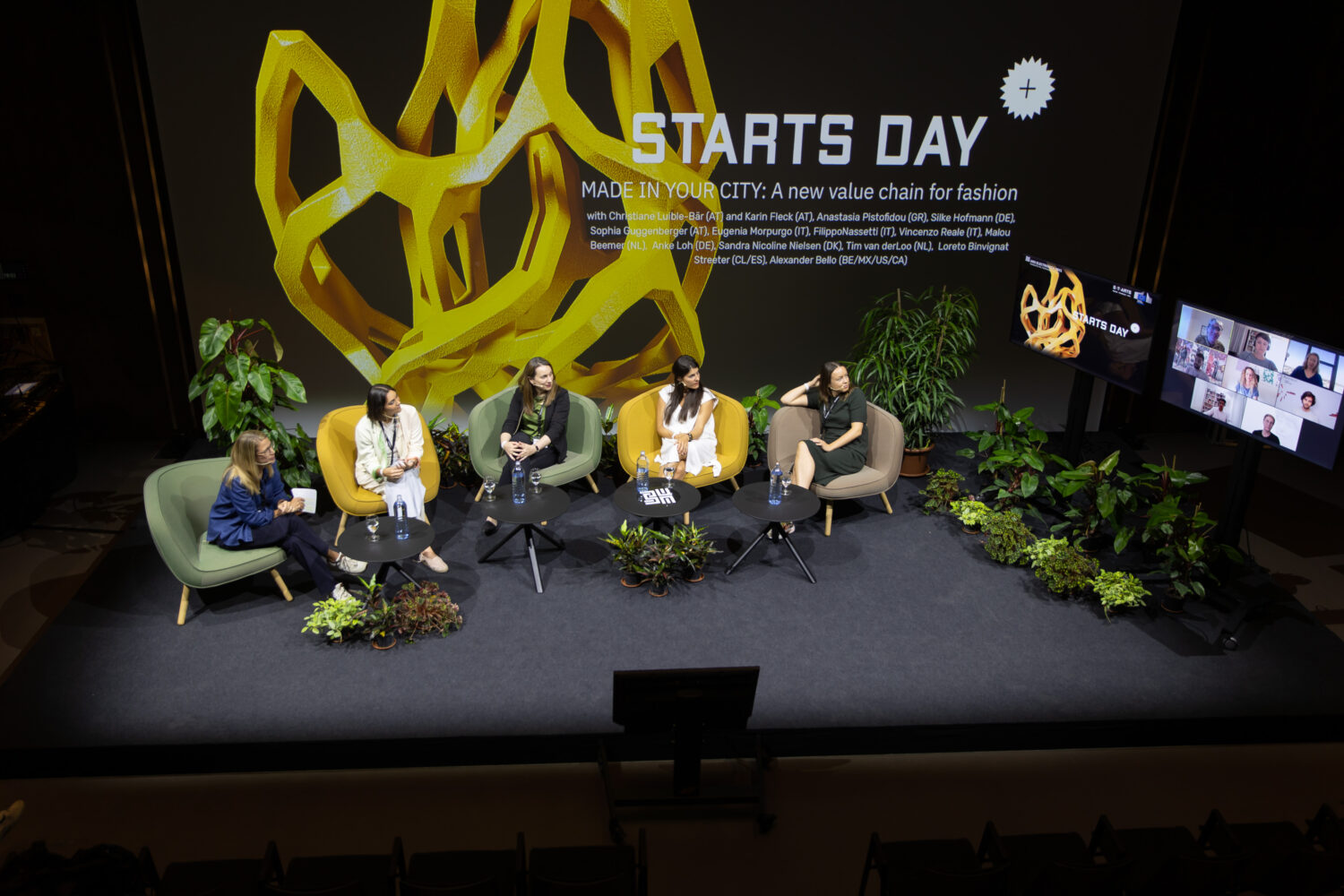
Platform Europe – Shaping technological change through art
Ars Electronica is now a key partner in European initiatives that use artistic perspectives and methods to explore how new technologies can be designed to benefit society.
One result of this work is Platform Europe—an ecosystem for creativity, collaboration, inclusion, sustainability, and democratic values. It is created through open calls, residencies, exhibitions, conferences, workshops, and networking formats that promote dialogue between art, technology, and society.
As a bridge between art, civil society, industry, and European politics, Platform Europe sees itself as a catalyst for change – supported by the European Union.
Chapter IX / Ecosystem
But how can we imagine the Ars Electronica ecosystem? How does it work?
This is most clearly illustrated by specific projects in which various departments are involved in the conception, implementation, presentation, and further development. One example is Deep Space.
Developed, operated, and distributed by Ars Electronica – the Deep Space
Culiacán (Mexico), Shanghai and Hangzhou (China), Vitznau (Switzerland), Zagreb (Croatia), Veszprém (Hungary) – and, of course, Linz: all these cities now have Deep Spaces that turn art, science, astronomy, and cultural heritage into immersive experiences.
The fact that Deep Space is now in demand worldwide is thanks to the close collaboration between several areas of Ars Electronica: Ars Electronica Futurelab designs and develops Deep Space, while Ars Electronica Center makes it accessible to the general public. As part of the Ars Electronica Festival, Deep Space becomes a stage for experimental presentations and artistic applications, while Ars Electronica Solutions is responsible for its worldwide marketing.
What makes Deep Space so special and successful is its operation as a “prototype in real-time operation”: every new presentation, every collaboration with artists, researchers, or curators, every piece of feedback from the audience generates valuable insights. The Ars Electronica Futurelab uses these insights to advance the technical development of Deep Space, while the museum team optimizes its storytelling. Because Deep Space’s potential is constantly growing, Ars Electronica Solutions has the opportunity to attract new customers.
This continuous cycle of innovation, application, and further development is based on the interaction between the research and development department, the museum, the art festival, and the market-oriented business unit. Deep Space illustrates how the Ars Electronica ecosystem contributes to the sustainable success of a project. The same applies to numerous other projects and ideas that flow into this network—whether as submissions to the Prix Ars Electronica, EU-funded initiatives, FFG-financed research projects, or private-sector commissions.
Help shape the future
More than four decades after Hannes Leopold’s vision first materialized, Ars Electronica is a world-leading platform for art, technology, and society. It is a festival, competition, museum, studio, research and development laboratory, creative and consulting agency, educational institution, and future workshop. What began as an event has thus become an ecosystem that continuously absorbs and responds to impulses from a wide variety of industries, disciplines, communities, and cultures. Every change in one part affects all the others and drives the further development of the whole.
Through it all, Ars Electronica has always been about “the tension and the interrelationships between people and technology, between art and technology,” as Hannes Leopoldseder writes in his foreword to the very first festival catalog in 1979. But since this very tension has long since permeated all areas of our lives, Ars Electronica decided years ago to work with and for a wide variety of partners. Those who do not wish to merely observe emerging developments from a safe distance and reflect on them in an ivory tower, but actively shape them, must be active with, for, and within business, industry, science, the public sector, education, and culture.
“Ars Electronica is not an event that takes stock of the past, but is focused on the developments of tomorrow,” Leopoldseder stated in 1979. “For this reason, this event on electronic art and new experiences has the character of the unpredictable, the risky, and the daring.”
In 2025, this mission is more relevant than ever.
